A Fine Family

Rebecca Ailes-Fine and Peter Fine have mastered work-life balance with their particular brand of his-and-her roles



















Rebecca Ailes-Fine and Peter Fine have mastered work-life balance with their particular brand of his-and-her roles


















In the heart of Arizona, discover a revitalizing 250-acre desert oasis that must be seen, touched and tasted to believe. Here you’ll find a luxury spa with rare, desert-inspired treatments and therapies, a unique Scotch Library featuring 370 of the finest Scotch whiskey labels, a world-class golf club with 27 distinctive holes set against the backdrop of the McDowell Mountains and Adventure Pool Cabanas that deliver a luxurious, personalized poolside experience.


The Westin Kierland Resort & Spa awaits…

Learn more about The Westin Kierland Resort & Spa at marriott.com/phxws.
Book your luxury experience:

EDITOR IN CHIEF
Karen Werner
PUBLISHER & CEO
Andrea Tyler Evans
ASSOCIATE PUBLISHER
Lisa Pagel
CONTRIBUTING EDITOR & COO
Tom Evans
CREATIVE DIRECTOR
Neill Fox
DESIGNER
Cheyenne Brumlow

DIGITAL EDITOR & PRODUCTION COORDINATOR
Abby Petersen
CHIEF OF STAFF & PRODUCTION MANAGER
Lori Appleby Hoke
LIFESTYLE EDITOR
Zenobia Mertel
CONTRIBUTING WRITERS
Julie Coleman
Shoshana Leon
Angela Keller
Judy Pearson
FRONTDOORS TV HOST AND EXECUTIVE PRODUCER
Carey Peña
SENIOR ACCOUNT EXECUTIVES
Lisa Grannis
Lindsay Green
Robyn Lambert
Morgan McClellan
Michelle Schneider
BEAUTY PARTNERS
Remedy Salon & Spa
The Sparkle Bar
PHOTOGRAPHY
Scott Foust Studios
FRONTDOORS MEDIA ADVISORY BOARD
Latasha Causey
Russ Dickey
Rusty Foley
Sue Glawe
Sarah Krahenbuhl
Larry Lytle
Monique Porras
Brad Vynalek
SOCIETY OF CHAIRS ADVISORS
Deborah Bateman
Linda Herold
Peter Fine and Rebecca Ailes-Fine at the Desert Botanical Garden
Photo by Scott Foust
Makeup by Charlee Torres, The Sparkle Bar
3104 E. Camelback Road, #967, Phoenix, AZ 85016 480.622.4522
info@frontdoorsmedia.com | frontdoorsmedia.com
Ma gazi ne
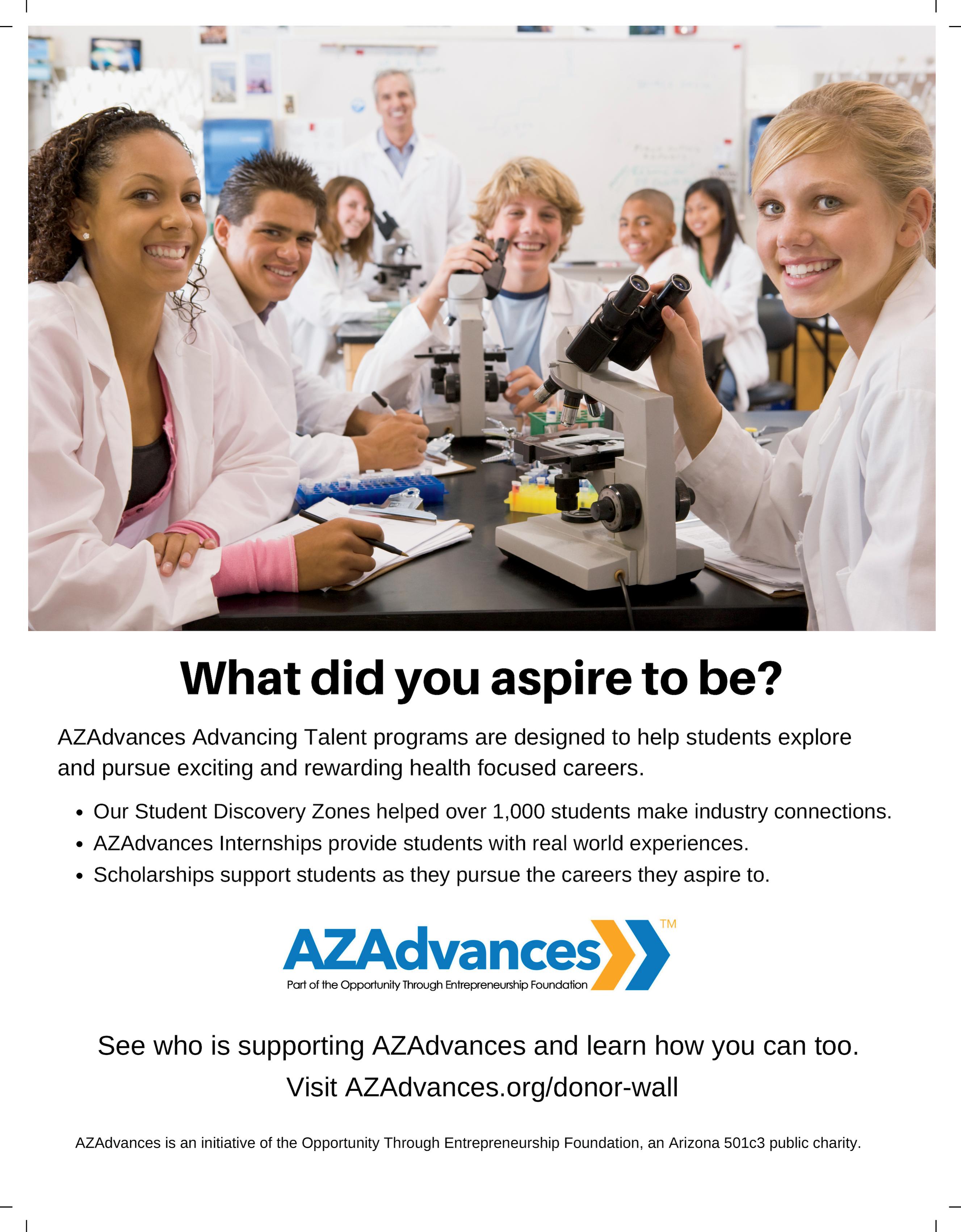
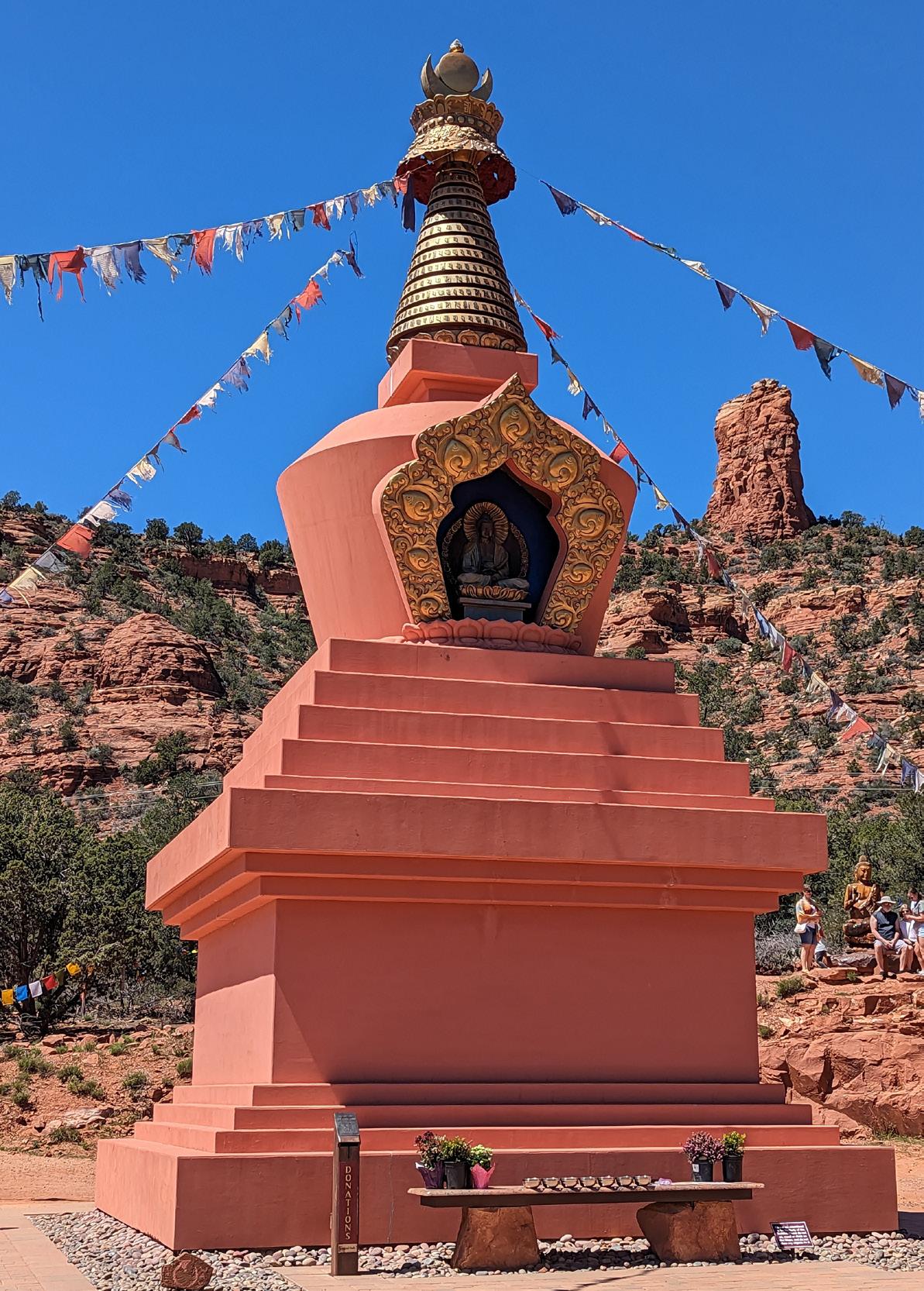
Discover the contemporary, approachable elegance of The

with its aweinspiring Sonoran surroundings. Or, elevate your summer with an exclusive retreat for two at The Canyon Suites at The Phoenician, the Valley’s only Forbes Five Star, AAA Five Diamond resort-within-a-resort. Pick your luxury and enjoy golf, spa and dining specials, as well as signature activities and seasonal celebrations. Whatever your style, reach new heights with a getaway to Arizona’s premier resort destination.


You wouldn’t have known summer was almost here from the weather at our recent cover shoot. Smack in Phoenix’s run of colder-thanaverage spring days was one particularly blustery afternoon.
Picture this: a group of us gather for a cover shoot. Donned in a thick sweater, I held the reflector in the sky while Scott Foust snapped photos. My goal? To bounce and diffuse rays and not get picked up and blown over the Desert Botanical Garden.

Through it all, Rebecca Ailes-Fine and Peter Fine smiled while the wind blew, unfazed by the tumultuous weather. Consummate pros and partners, they were great sports as they led us through the garden they support.
There, in the historic section, was the Fine Family Contemplation Garden, a meditative labyrinth with seating and a large, reflective water feature. The space was a gift from the Fines to thank the Garden for providing peace and healing during a difficult time.
The Fine Family Contemplation Garden was featured in a Disney Christmas movie, “Noelle,” Peter noted proudly, and it’s a favorite spot for out-of-town guests.
And for Midwestern teachers visiting Phoenix during spring break, apparently. A large number have noticed a familiar name etched onto a sign: Jillian Heise, Rebecca and Peter’s daughter. An elementary-school librarian in Milwaukee, she wrote the poem that was excerpted on the garden sign.
Jillian gets a kick out of how many colleagues recognize her name. Her words describe the family she grew up in and what this month’s cover story is about.
In the piece, Rebecca and Peter contemplate their lives and marriage and reflect thoughtfully on the children they’ve raised, the work they’ve done, and how they are stewarding two new generations of philanthropists.
And spoiler alert: They make it seem like it’s no big deal. Just like being married for more than four decades or leading a huge organization or raising millions for charity or posing for photos during a windstorm — they smile and carry on.
KAREN WERNER EDITOR IN CHIEF
The North Star Changes: Works by Brenda Mallory features sculptures that the artist has made using reclaimed and found objects, some taking the form of largescale installations. Mallory notes, “The idea that an object has more than one use, more than one life in it, is what appeals to me.”

You’re from Columbia, MO. How different is it living in the Valley?
I never knew I would miss the color green so much! But there’s a huge Missouri crowd out here and a lot of people from Mizzou (the University of Missouri). The people here are awesome, and our fan base is just like Mizzou, so there are a lot of similarities. I love both places and call them both my home, which I’m blessed to be able to do.
You’re known for being a little bit sassy and spicy, both on and off the court. Has that always been a part of your personality?
I come from a family of strong females. They’ve always said, “Put your shoulders back and be yourself. Be the hardest worker in anything you do, but also enjoy it and have fun.” I think people are thrown off by my competitiveness, because I’m not going to back down. I don’t care who you are or what you look like; I’m going to stand up for myself and my team. It’s funny because, at this level, everyone’s a competitor, so I don’t take it personally. But yeah, I’m a little spicy sometimes.
What does it feel like when you are on fire during a game?
When I’m in the moment, and knocking down my shots, it feels good, because I like to get the crowd involved. It comes naturally that my celebrations are fiery. I yell, pump my fists and slap my teammates on the butt. Sometimes I high-five fans, depending on where I’m at. Getting the crowd into it is a big deal, especially at this level. So, heck yeah! It feels great seeing your work pay off.
You had a career year last season with the Mercury. What’s your outlook going into the upcoming WNBA season?
In my first two to three years, I just had to put my head down and work. There wasn’t a lot of opportunity, and I had to stay ready. I think that perseverance and resiliency to keep working hard and keep getting better paid off, and I had one of my best seasons last year. For me, it’s the tip of the iceberg. I know there’s so much more in my tank.
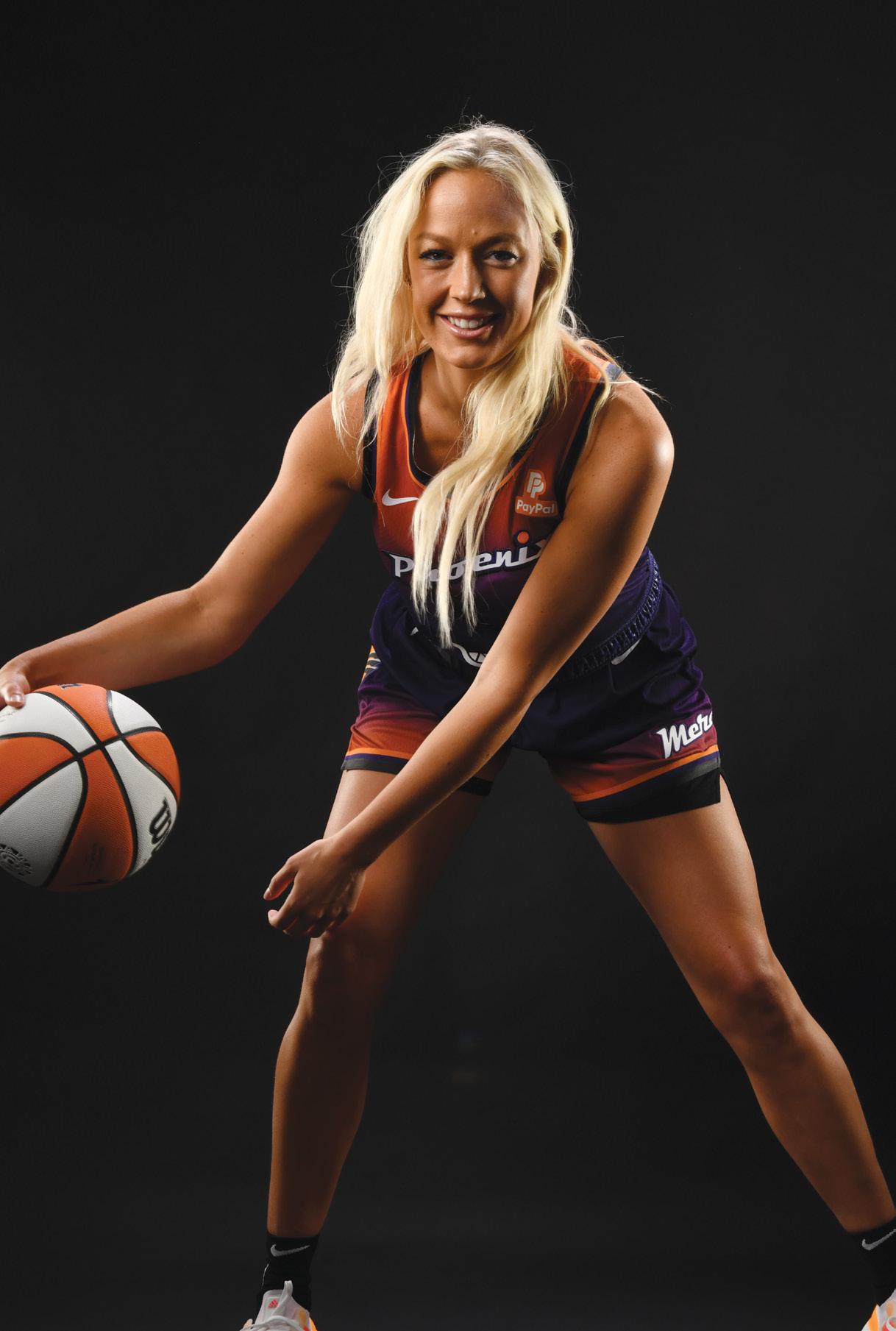
You are a fan-favorite among the “X-Factor.” What’s special about the Mercury fanbase?

The X-Factor is hands-down the best crowd you can play in front of in the WNBA. They’re just as feisty as we are. They’re rowdy, they yell at the refs more than we do, and they’re involved and supportive. Everyone you ask says Phoenix is the hardest place to play because of the X-Factor. Playing in front of them is an honor; you just want to put on a show for them.
This season you joined the Phoenix Suns broadcast team. What was that experience like?
It’s been so much fun. Tom Leander, K-Ray (Kevin Ray), Eddie (Johnson), TC (Tom Chambers), Annie (Ann Meyers Drysdale) and the entire production team have been amazing and have embraced me. I could talk to a wall for five hours, but I am new to doing the pre-, half- and post-game shows. I’m learning a lot, and it’s so much fun to talk about the Suns. They’re a phenomenal team, especially with KD (Kevin Durant) back. I think this is what I want to do when I’m done playing, so getting my foot in the door while I’m playing is a blessing. A lot of people don’t get that opportunity, so I’m running with it.
Describe your personal style.
I would say it’s a little bit edgy. What I’m trying to go for is sporty and edgy, but elegant. I do want to show a little skin, but not too much. I want to make it sporty so you could wear it to a nice dinner or sporting event. I’m in a stage of my life where I don’t care about impressing anyone. I want to make sure I like what I’m wearing, I’m comfortable and I’m confident.
What are your favorite things to do in the Valley during your free time?
Being at the pool or anywhere near water. I love to hike. I have a dog named Brutus and we go on so many hikes. You can catch me doing anything outdoors. I found a little farmers market, and I think it’s fabulous and so much fun — I’ve met a lot of Mercury fans. I also love concerts and am going to Country Thunder this year.
What charitable causes are you passionate about ?
My number-one is Ronald McDonald House. I got exposed to it at the Ronald McDonald House in Chicago during the McDonald’s All American Games, and I fell in love with the whole thing. It was the first time I had heard about it, and it opened my eyes. I’m so grateful for the platform I have been given. I’m healthy and think it’s super important to give back to those kids and families going through things that people can’t even imagine. My sister, family and I put on a game every year and donate to the Ronald McDonald House. I also love the Boys & Girls Clubs here in the Valley. My mom used to work for the Children’s Trust Fund of Missouri, and hearing stories about kids that don’t come from good homes or don’t have the funds to get things they need, I think it’s our responsibility to give back.
What would readers be surprised to learn about you?
I feel like I’m an open book, to be honest, but I think people would be surprised that I can actually sing!
To learn more and purchase tickets, visit mercury.wnba.com
This year, the Nina Mason Pulliam Charitable Trust celebrates 25 years of community grantmaking in Arizona. To honor Mrs. Pulliam’s legacy and her appreciation for the importance of having vibrant communities, the Trust supports the Phoenix Zoo to enrich community life in Maricopa County.

Mrs. Pulliam had a special passion for the Phoenix Zoo during her lifetime and was instrumental in helping the zoo save the Arabian oryx. The Trust has since aided in preserving the Sumatran tiger, orangutan and the African lion in her honor. Over the past 25 years, the Trust has awarded the Phoenix Zoo $3.3 million. A $1.5 million grant helped create the children’s and school group entrance and the Nina Mason Pulliam Children’s Trail for children’s programming and education. And, $1.5 million was provided for a new Sumatran tiger exhibit and an endangered African lion and spotted hyena habitat. ninapulliamtrust.org
Learn more about the Phoenix Zoo at www.phoenixzoo.org.
That’s the ASU Art Museum’s mission. So when a half-million dollar opportunity emerged that supports diversity within the museum’s staff, it was a perfect match.
In early 2023, the ASU Art Museum, in collaboration with CALA Alliance (Celebración Artística de las Américas), was one of 10 institutions in the country selected as part of the Advancing Latinx Art in Museums initiative. This initiative is the second phase of three in the U.S. Latinx Art Visibility Fund.
 A pattern, a trace, a portrait: Four Artists from CALA Alliance’s Residency Program, 2023, installation view, ASU Art Museum, Tempe. Courtesy of ASU Art Museum.
Photo by Craig Smith
A pattern, a trace, a portrait: Four Artists from CALA Alliance’s Residency Program, 2023, installation view, ASU Art Museum, Tempe. Courtesy of ASU Art Museum.
Photo by Craig Smith
Funded by the Mellon Foundation, Ford Foundation, Getty Foundation and Terra Foundation, the initiative aims to support museums and other arts organizations that have shown dedication to collecting, exhibiting and engaging with Latinx art while amplifying the voices of artists.
It comes as no surprise that ASU Art Museum and CALA Alliance were recipients of the grant. ASUAM is one of the leading voices in the country in showing how diversity, equity and inclusion can make all of us stronger. In fact, ASU graduates more first-generation students than any other university in the nation. CALA Alliance works solely with artists from the Latin American diaspora through their residency program, community engagement and artist commissions.
“We received this not because they believed in the potential; they believed in what we’ve already accomplished,” said Miki Garcia, director of ASUAM. “We have such a longstanding commitment to Latinx and Latin American art.”
What makes Latinx art unique from Latin American art is that Latinx art refers to art created by someone of Latin American origin who lives in the United States. In contrast, Latin American art is made by artists who grew up and live in Latin America.
“This is a really important distinction. Many people think Latinx art is synonymous with Latin American art. It is not,” said Alana Hernandez, CALA Alliance executive director and curator. “Latinx art is American art. I think people are finally starting to listen to that.”
Because of this lack of understanding, many of the contributions that Latinx artists have made don’t end up in museums or history books. While Latinxs make up about 19 percent of the U.S. population, Latinx art represents under 3 percent of museum exhibitions and collections.
So, there’s an entire American perspective that’s largely missing from many art museums. Latinx art hasn’t
been adequately represented, partially because of a fundamental misunderstanding and miscategorization by museum directors and curators. The truth is that Latinx art often falls through the cracks.
“Major art museums have not done nearly enough to center the histories of people who have been here for generations and generations, whose cultures have produced and been part of what makes America unique,” said Garcia, a fifth-generation Texan and Mexican American. “So it’s really important to have a Latinx curator out there promoting the experiences of Americans. Latino Americans.”
Each of the chosen institutions received $500,000 to create 10 permanent early- to mid-career curatorial positions with a focus on Latinx art. The five mid-career positions will promote existing curatorial staff at these institutions, while the five early-career positions will be new jobs.
Through the grant, Hernandez now holds a joint position at the ASU Art Museum as the CALA Alliance curator of Latinx art. Their partnership with the ASUAM dates back to CALA’s inception in 2010.


“It’s important that the artists we work with see that we look like them — that we have the knowledge, lived experience, work experience that speaks to many of the issues and histories that are being presented through their work and that we are active stewards of this art history,” Hernandez said. “Because art history is happening now.”
Both the present and the future of art in Arizona are exciting, with leaders like Garcia and Hernandez passionate about bringing the Latinx experience to light through art. Arizona’s myriad cultures and traditions translate into the art we see every day, from the colorful and distinctive murals of downtown Phoenix to the many art festivals held across the Valley.
Places known for their art scenes, like New York City,
San Francisco and Washington, D.C., have become too expensive for many people — young and emerging artists, especially — to live in. Garcia, who has held positions in art museums throughout the country for nearly 25 years, recalls artists moving away from places like Phoenix to make their art in California or New York.




“People aren’t leaving anymore,” Garcia said. “They’re staying in their home cities like New Orleans or Detroit or Phoenix, and these cities are emerging, as these specific cultural destinations are unlike any other place.”
To learn more, go to asuartmuseum.org and calaalliance.org
 Residencias Artísticas Regional Resident: Sam Frésquez Open Studio, June 24, 2022. CALA Alliance, Phoenix.
Photograph courtesy CALA Alliance ©Shaunté Glover
How I Became an Artista: Cyanotype Workshop with Annie Lopez, Aug. 20, 2022. The Sagrado Galleria, Phoenix.
Installation view of Carolina Aranibar-Fernández: Agua entre la metalurgia (Water in between metallurgy). CUE Art Foundation, New York, Jan. 19–March 11, 2023. Photograph courtesy CUE Art Foundation ©David Cortes
Photo by Tim Trumble
Photograph courtesy CUE Art Foundation ©David Cortes
Photography courtesy CALA Alliance ©Shaunté Glover
Photograph courtesy of CALA Alliance and Calderón Galley ©Dario Lasagni
Installation view of Lucha Libre: Beyond the Arenas at Arizona State University Art Museum, October 2022–May 2023
Residencias Artísticas Regional Resident: Sam Frésquez Open Studio, June 24, 2022. CALA Alliance, Phoenix.
Photograph courtesy CALA Alliance ©Shaunté Glover
How I Became an Artista: Cyanotype Workshop with Annie Lopez, Aug. 20, 2022. The Sagrado Galleria, Phoenix.
Installation view of Carolina Aranibar-Fernández: Agua entre la metalurgia (Water in between metallurgy). CUE Art Foundation, New York, Jan. 19–March 11, 2023. Photograph courtesy CUE Art Foundation ©David Cortes
Photo by Tim Trumble
Photograph courtesy CUE Art Foundation ©David Cortes
Photography courtesy CALA Alliance ©Shaunté Glover
Photograph courtesy of CALA Alliance and Calderón Galley ©Dario Lasagni
Installation view of Lucha Libre: Beyond the Arenas at Arizona State University Art Museum, October 2022–May 2023

“Magic Tree House The Graphic Novel: Dinosaurs Before Dark” by Mary Pope Osborne; adapted by Jenny Laird; illustrated by Kelly and Nichole Matthews

“Magic, fun, adventure AND Science? Yes, please! In this story, siblings Jack and Annie find a magic tree house that transports them back to the Cretaceous period. They must figure out how to get home before dark, and before becoming the next dinosaur meal, but they definitely learn some things along the way.
The Magic Treehouse books are classics, and have been newly published as graphic novels. My 8-year-old daughter, Carson, recently discovered them at the library, and absolutely loves them. Carson struggles with reading, so when she knocked out 150+ pages of ‘Dinosaurs Before Dark’ in just a couple of days, I knew this series was special. In this format, there are more images and less text than in the original series, but this helped increase not only her confidence in her ability to read, but also her interest in reading at all.
When I asked her what she liked about ‘Dinosaurs Before Dark,’ her eloquent response was, ‘Who wouldn’t want to travel back in time to see dinosaurs?’ Touché, Carson.
If you have an emerging reader at home or are just looking for a fun, vibrantly illustrated story for your kiddo’s summer reading list, ‘Dinosaurs Before Dark’ is a perfect fit.”















A preview of the Valley’s premier philanthropic events and who’s leading these important efforts

DATE: August 19, 2023
BENEFITTING: Valley Youth Theatre
CHAIR: Kate Kinhan vyt.com

DATE: September 9, 2023
BENEFITTING: Fresh Start Women’s Foundation
CHAIRS: Rebecca Cohen Collins and Lauren Papagalos freshstartwomen.org/get-involved/events/annual-events/











FOR



HonorHealth; Laurie Florkiewicz, Chair, HonorHealth Foundation Board of Trustees; Jared Langkilde, President and CEO, HonorHealth Foundation; Sandy Trznadel and Sue Fletcher, chairs, Honor Ball 2023; Christine and David Watson, Honor Ball 2023 Honorees
Thanks to the vision of our dedicated chairs and their committee, the 46th annual Honor Ball transported nearly 900 guests to Havana’s famed Tropicana Club.

HonorHealth Foundation is proud to celebrate David and Christine Watson as the Honor Ball 2023 Honorees.
BENEFITING


HonorHealth Cardiovascular Center of Excellence and


HonorHealth Christine and David J. Watson Healthcare Heroes Endowment


Vitamin SEA is always a good idea
Gold Chain One-Piece | $275

Same Los Angeles samelosangeles.com
Percival Eau de Parfum, 2.5 oz | $250 Parfums de Marly Nordstrom, Chandler and Scottsdale locations nordstrom.com

Daydream Sunglasses | $89 Muse Apparel, Phoenix shopatmuse.com














Paloma Clutch | $1,490 Christian Louboutin, Scottsdale Fashion Square us.christianlouboutin.com

UV Daily Tinted BroadSpectrum SPF 40 Sunscreen | $38
EltaMD Skincare eltamd.com

Portofino Automatic 34 | $6,500
IWC Schaffhausen, Scottsdale Fashion Square iwc.com

Longwear Nail Colour, Cruise | $30 Chanel, several Valley locations chanel.com

Fashion Emergency Kit | $90 The Rescue Kit Company therescuekitco.com





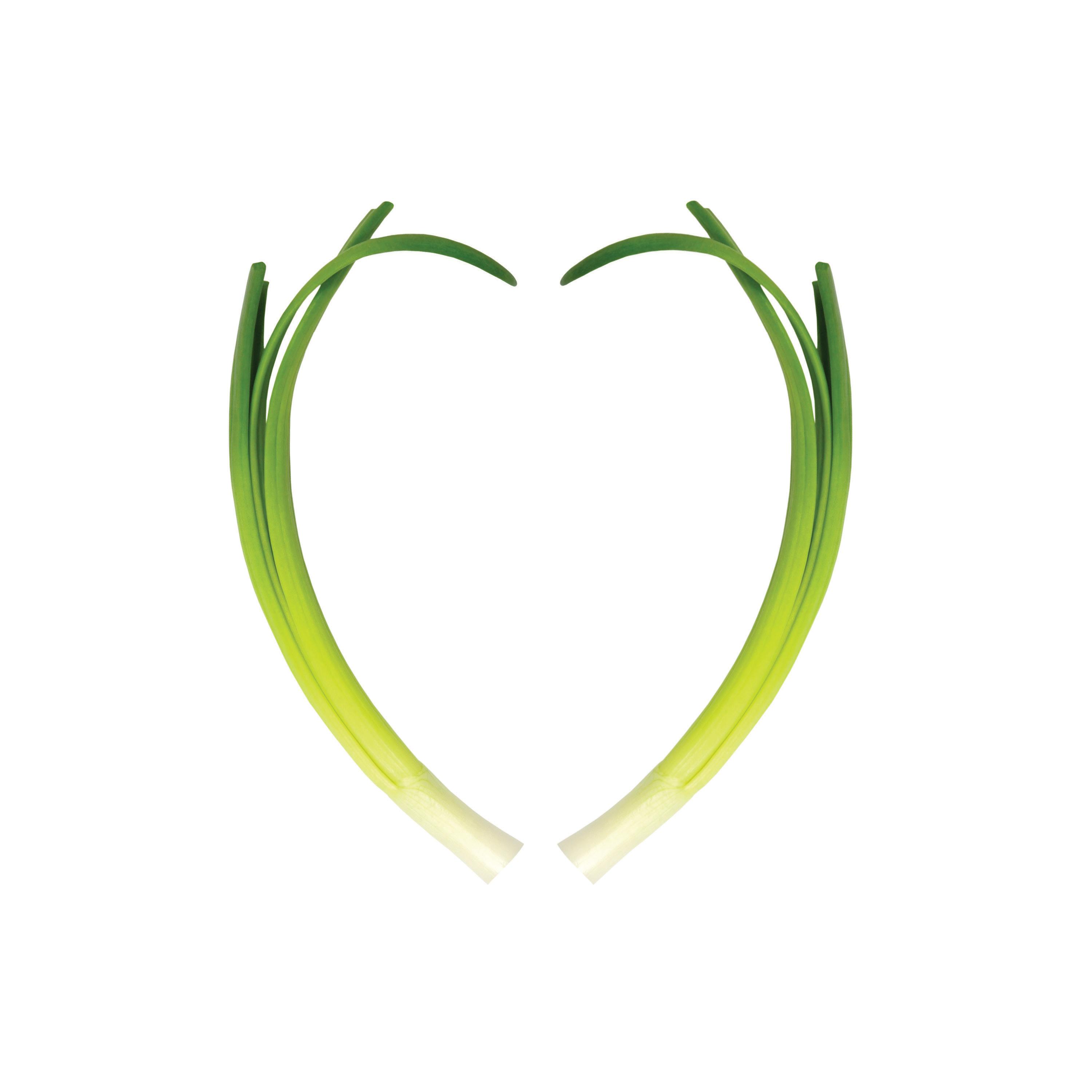

 BY ANGELA KELLER, MOM STYLE LAB PHOTOS COURTESY OF THE FREDERICK
BY ANGELA KELLER, MOM STYLE LAB PHOTOS COURTESY OF THE FREDERICK
The Frederick is a hidden gem in the middle of North Central Phoenix. With its retro-contemporary vibe of buildings surrounding a central lawn, it’s the perfect setting to grab a coffee or indulge in retail therapy. Fortunately, there’s a localfavorite coffee shop, and the center will soon be buzzing with a new 2,500-square-foot restaurant.

With a public relations and marketing background, Chantell Moulin Nighswonger had always dreamed of opening her own boutique. So, after moving back to Arizona (and with urging from her husband, Kevin), she decided to put her dream into action. Over five years, VIDA | MOULIN amassed a loyal customer base and outgrew its space, leaving Nighswonger to consider her options.

Though it appeared to be an old office complex begging for a revamp, the Nighswongers knew the mid-century building and serene courtyard had incredible potential and was ideally located for a neighborhood shop & dine destination. In addition to a new home for VIDA | MOULIN, Nighswonger envisioned a center with complementary, like-minded businesses where the shops could collaborate and the surrounding community would enjoy gathering. Built in 1963, the now-modernized complex is named after the original architect, Frederick Weaver. “While initially we weren’t looking to take on as big of a project as The Frederick, we quickly realized there was a huge hole in the market for smaller spaces in a unique setting with multiple retailers,” Nighswonger said.

True to her vision, Nighswonger curated nine local businesses to fill the space, eight owned by women. She had known several of the business owners for years and admired their work ethic, plus their connection to the Phoenix community. “I joked that if I could also enjoy a glass of wine with them, I knew they would be a fit,” she said. “At the end of the day, my goal was to create a place full of my favorite types of local businesses — a place you could take out-oftown guests to show them how cool the city is.”
To learn more, go to thefredphx.com
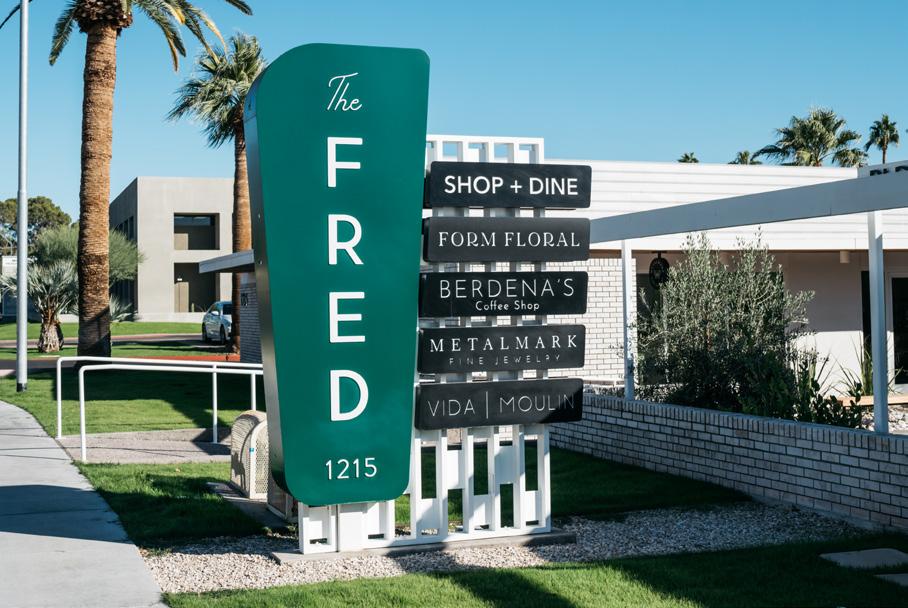
With a beachy-boho vibe, this boutique does a fabulous job dressing customers for everything from the weekend to special events. It also features a unique selection of accessories, shoes and gift items. vidamoulin.com


Known for unique, small brands you’d typically only find online, Cricket + Ruby is a modern baby and children’s boutique. The owners make it a point to host regular community events to bring families and fun to The Fred. cricketandruby.com
Go for the lavender latte; stay for the vibe. The only male-owned business at The Frederick, Jonathan Madrigal’s shop has quickly become a habit for those living and working in the area. In addition to coffee drinks, the menu includes tea, breakfast sandwiches and more. berdenas.com

Named for a butterfly species with gold markings, Metalmark is a fine jewelry boutique featuring both emerging and established designers from around the globe. Owners Samantha Larkins and Mary Leppert have created a more intimate, less intimidating approach to shopping for fine jewelry and specialize in custom designs and wedding rings. metalmarkfinejewelry.com
Known as a brow magician, Melissa Pruett has created a wonderful selfcare experience for her clientele, from the start of their service to the moment they walk out the door. The MELT menu includes brows, lashes, skincare, sugaring, spray tanning and microblading. meltbymelissa.com
Known for their stunning event offerings, Form Floral has created a special space with an amazing Instagrammable floral wall where customers can create their own bouquet or hand it over to the experts. formfloral.com

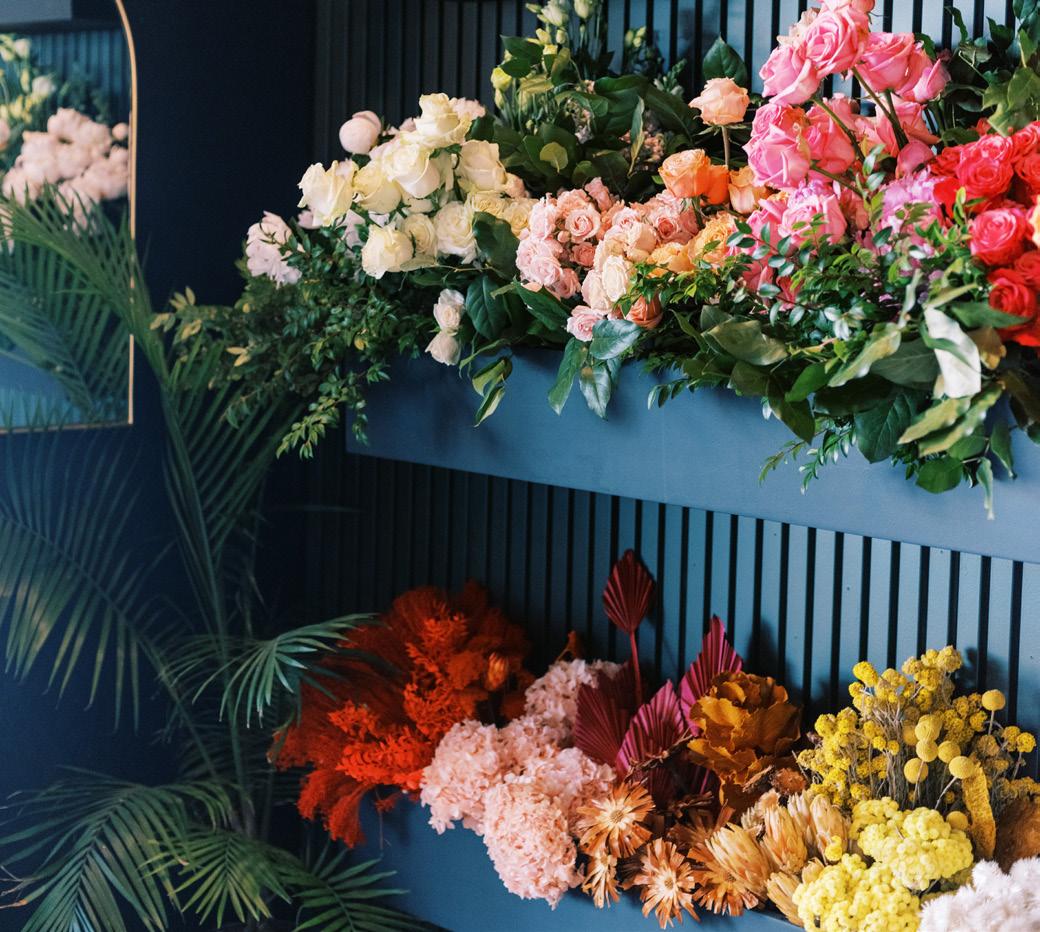
Creative Kind features unique, primarily locally made gifts, including stationery, home décor, health & beauty and greeting cards as well as build-your-own gift boxes and custom gifting services. Private workshops are held in The Fred’s courtyard — think macrame, painting and embroidery. creativekindshop.com
Batea is filled with thoughtfully curated items, ranging from clothing and home décor to gifts and vintage pieces. The owner has a discerning eye for quality vintage and design, so you’re sure to discover a treasure for yourself or others. bateaboutique.com



A crave-worthy treat, Mahalo Made serves up Japanese-style shave ice. Made daily with fresh fruit and ingredients, the shop features an ever-changing special menu based on the season. Run, don’t walk, especially now that warm weather has arrived — the shop often sells out!
Follow @thefredphx on social media to stay updated on monthly events.

After years of family vacations and college-scouting trips, my husband and I set out on our first solo getaway in ages. We packed two small bags and headed for two days in Sedona.
We had been invited to Amara Resort and Spa, which recently underwent a multimillion-dollar renovation designed to let guests chill out and get out.

Located in the heart of Uptown Sedona, Amara is nestled in the natural surroundings of Oak Creek. Situated next to the rushing water, the resort is two blocks down the hill from Sedona’s bustling shops and uptown scene.

Guests appreciate the resort’s convenient location and views of beloved landmarks like Snoopy Rock. It also earns high marks for its expansive courtyard and inviting outdoor fire pits.
The new concept of the hotel is to have a “tree lodge” aesthetic that reflects the area’s natural surroundings by encompassing the five elements — earth, wood, metal, fire and water. The resort’s two wings of guestrooms are positioned to frame views of the famous red rocks that are said to emanate regenerative and inspirational energy.
Indeed, our Junior Suite chilled us out very fast. The elegant retreat offered panoramic views and sat above the edge of Oak Creek, which we enjoyed hearing gurgle from our patio every night. In the day, my husband used an app to count the types of bird we could hear singing. Answer: 23. (What up, Yellow-rumped Warbler?)
Our sleek room featured a low-slung King bed and architecture that brought the outdoors in, making the desert surroundings supreme.

Those looking for genuine service will be pleased with Amara. Amenities anticipate every need — like umbrellas in guestrooms or the “public bikes,” free to all guests, for exploring shopping, art galleries or single-track.
As cozy as it is, Amara’s prime location encourages guests to explore the iconic red rock formations and fabled vortexes before heading back to float in the heated, infinityedge pool. Hiking trails, shopping and other adventures are minutes away, thanks to the resort’s complimentary shuttle.
And a note to pet lovers. Amara is quite pet-friendly.
A sign in the lobby welcomes every furry friend staying as a guest. There are also dog treats and a water bowl near check-in.
Each day of our stay, we enjoyed the gorgeous red-rock
The entire point of going to Sedona is to enjoy nature, and the options for doing that are almost limitless. Jeep tours, stargazing, wine tasting — not to mention the countless hikes and bike rides Red Rock Country has to offer — are perfect ways for weekenders to enjoy the cooler weather and clear blue skies. Here are tips from locals for keeping it chill.

Consider driving into Sedona via wine country. Take the Cornville Road exit and go by the wineries and tasting rooms. Rocker and winemaker Maynard James Keenan recently opened his new tasting room, Four Eight Wineworks, in Old Town Cottonwood. It offers a variety of wines and a limited food menu. Visit four8wineworks.com to learn more.
In April 2022, the Sedona Shuttle became the City of Sedona’s first foray into public transportation. In the last year, the shuttle has been used by well over a quarter million passengers to provide free parking, rides and access to five popular trailheads from three park-and-ride locations. This free, easy and eco-friendly service is an ideal way to explore popular sites like Cathedral Rock, Dry Creek Vista, Little Horse, Mescal and Soldier Pass without worrying about
view from the patio of Amara’s signature restaurant, SaltRock Southwest Kitchen. Led by executive chef David Duncan, SaltRock’s menu features fresh, seasonal ingredients inspired by the Verde Valley.
SaltRock’s craft cocktail program spotlights the most extensive selection of agave spirits in town, along with drinks with a Sedona twist. Case in point: Guests can order Vortex Therapy, a cocktail with turmeric-infused vodka and inner peace flower elixir.
After a day of play, unwind at the award-winning Amara Spa. Treatments range from head (CBD facial) to toe (foot reflexology) and focus on Sedona-centric experiences. Try the Winds of Change, a signature service featuring native rattles, sage, crystals and specially crafted oils.
Learn more at amararesort.com.
parking. Trailhead shuttles run year-round from Thursday through Sunday, 7 a.m. - 5:30 p.m. Info at sedonashuttle.com.
The Amitabha Stupa and Peace Park is an outdoor venue for prayer, meditation and spiritual renewal for people of all faiths. It is filled with two Buddhist stupas, a Native American medicine wheel and numerous spots for meditation and quiet contemplation. Open daily and free of charge.
The locals will tell you — social media has changed the area. Sedona is so popular, droves of people coming wanting to snap pictures with a short list of famous red rocks. To encourage hikers to explore more than just the same top trails, the Sedona Chamber of Commerce & Tourism Bureau introduced Sedona’s Secret 7.
Aimed at hikers looking for paths less traveled, it offers trails deemed “hidden gems” by locals. It also offers seven locations within seven categories — hiking, biking, vistas, picnics, stargazing, arts & culture and the journey of the Indigenous Peoples — for a total of 49 hidden gems scattered across the Greater Sedona area. To learn more, go to visitsedona.com/sedona-secret-7
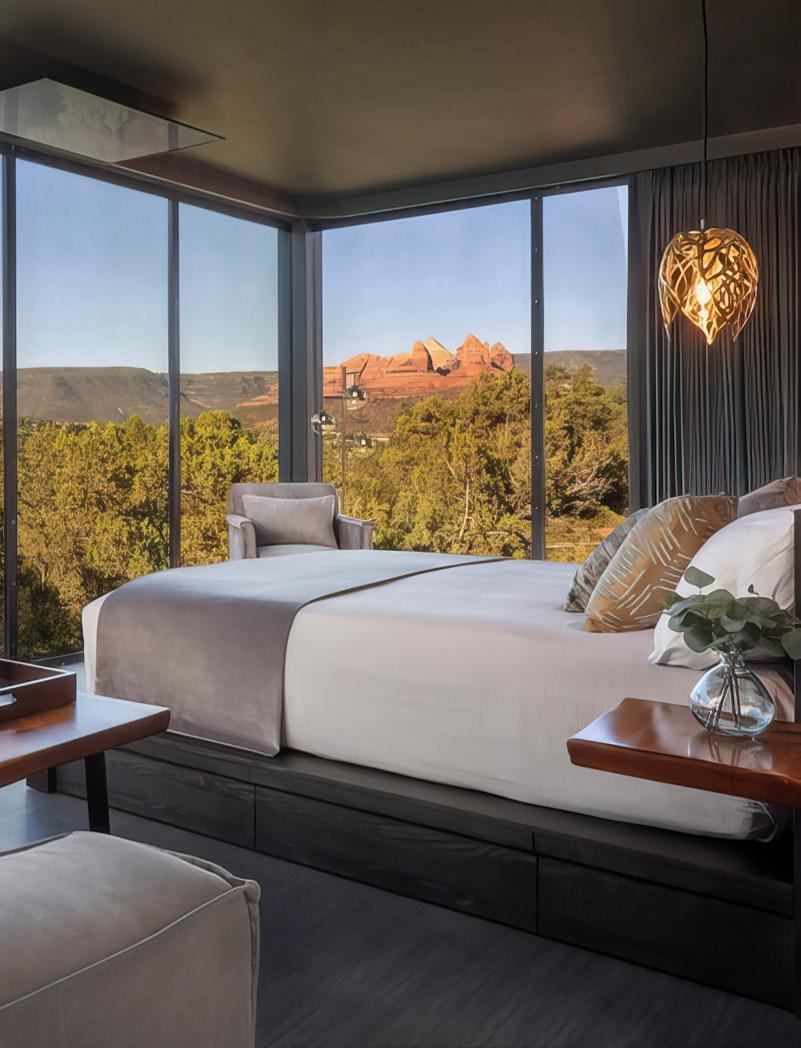

The majestic red rocks of Sedona are on full display from Ambiente’s 40 cubed-shaped, glass-encased “atriums” that seem to float above the rugged terrain. One of the most anticipated hotel openings in the country, Ambiente made its much-buzzed-about debut as North America’s first landscape hotel in February.
Bordering the Coconino National Forest, all atriums in the property offer the same 576-square-foot king accommodations. However, the dramatic 360-degree views vary drastically as each atrium has been expertly placed to maximize view corridors.
Elevated above the ground by steel piers and constructed using floor-to-ceiling, bronze-tinted glass and matte-charcoal and rusted metal, Ambiente’s atriums are designed to blend in with and reflect the surrounding geography. With a focus on sustainable methods and organic, modern architecture, the
atriums’ sleek design reflects elegant minimalism, while the interiors offer the best in luxurious contemporary accommodations.
All atriums have access to their own private rooftop deck for the ultimate sunbathing and stargazing experience. Lounge seating, a roaring firepit and a comfortable daybed make it an ideal perch to see the beaming stars, thanks to Sedona’s Dark Sky Association.
The adults-only hotel features the Velvet Spa, an intimate, five-room spa offering a range of restorative treatments that use locally sourced ingredients.
Forty1, the restaurant at Ambiente, has an all-female executive team. It is led by executive chef Lindsey Dale, a talented young chef with an appreciation for the spirit of the Verde Valley and a commitment to showcasing its abundance in her cuisine.
For more information, visit ambientesedona.com


With a wife he adored, a healthy son and daughter, an exhilarating career in banking, and the beautiful Pacific Ocean just a short drive from his Portland home, Chris Rudolph had the perfect life. During the winter of 1991, Rudolph got a chest cold. He was an active, healthy guy and figured the cold would go away. But it didn’t. He sought advice from his physician, who didn’t like what he heard in Rudolph’s chest and sent him to a cardiologist. That doctor sent him immediately to the hospital, where Rudolph was admitted for testing.

The news the next morning wasn’t good. A healthy heart is about the size of a fist; Rudolph’s was the size of a football. His diagnosis was idiopathic (spontaneous from an unknown cause) cardiomyopathy. Although he would be given a variety of drugs, his long-term survival was unlikely without a heart transplant. When the symptoms became too severe, Rudolph went on the transplant list and received a new heart in October 1996.
“I had always been a positive person,” Rudolph said. “On transplant day, I told my team, ‘You do the surgery, I’ll
take it from there.’” And he did, starting his first second act by joining the speakers’ bureau of the Portland chapter of what is now called Donate Life. “I spoke to churches, civic groups, schools, anyone who would listen about the importance of becoming an organ donor before a tragedy strikes,” Rudolph said. “And I joined their board of directors.”
He continued his volunteer work with Donate Life after he was transferred to Phoenix. Then came the 2008 financial downturn. Rudolph was laid off and eventually found his way to nonprofit development work, first at the Musical Instrument Museum and then at the Phoenix Art Museum. Then, slowly, the familiar symptoms returned. Rudolph knew his low energy and shortness of breath meant the beginning of heart failure. A visit to Mayo Clinic confirmed his suspicions. The majority of his arteries were

either collapsed or plaque-filled.
In January 2019, when most of us were putting away our holiday décor, Rudolph received his second transplant. This time a veteran, he knew exactly what he would need to do post-surgery. But two days later, he awoke in the hospital, totally blind. Rudolph tells the story.
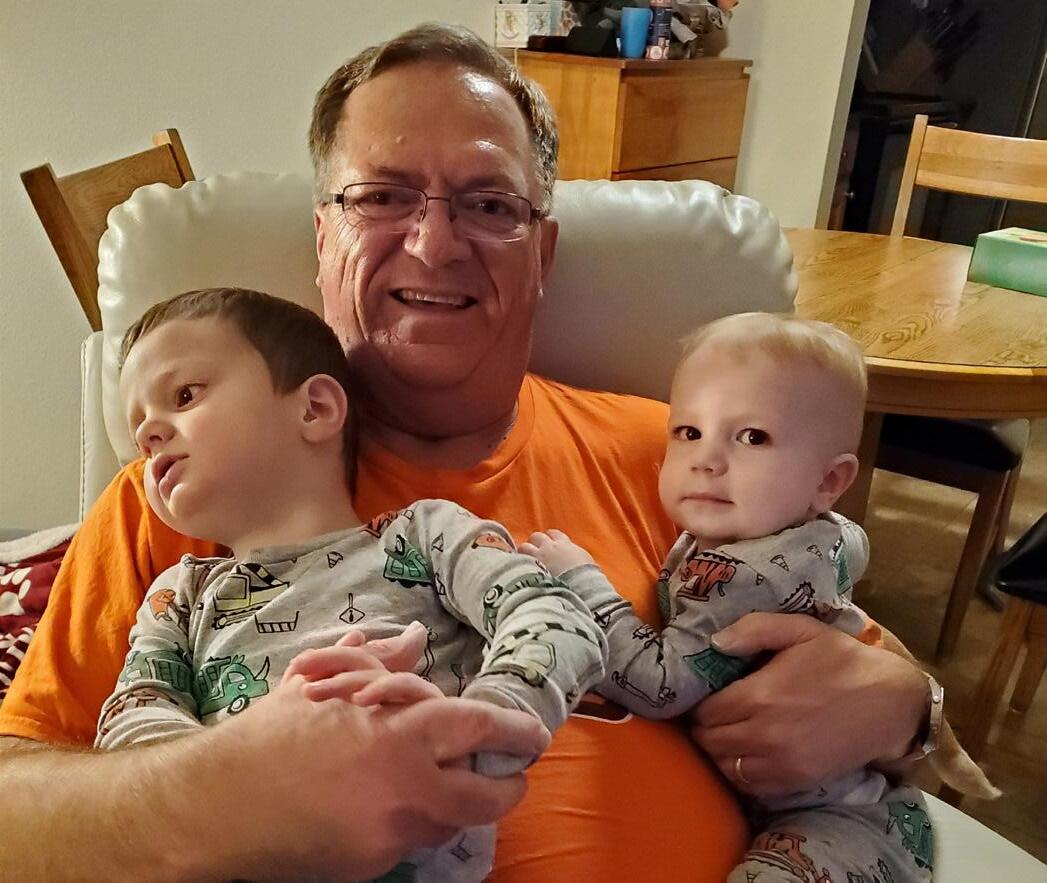

“A dozen doctors, including a neuro-ophthalmologist, could only surmise that I was the one in 10,000. The new organ anti-rejection drug had burned both of my optic nerves,” he said.
Some of Rudolph’s vision returned by the time he went home a few days later. “I have a small amount of peripheral vision in my right eye and about 20 percent in my left. Everything pretty much looks as though it’s dim and in the shadows,” he said.
Remarkably, Rudolph’s optimism did not dim. And his second second act began. A Mayo staff member connected him with the Arizona Center for the Blind and Visually Impaired. Founded in 1947, its mission is to facilitate independence and promote full participation in all aspects of everyday life. Rudolph availed himself of a number of their services, from cane training for mobility to life-skills training — learning how to adapt to sudden loss of vision. And as soon as he could, he was ready to lend a hand.
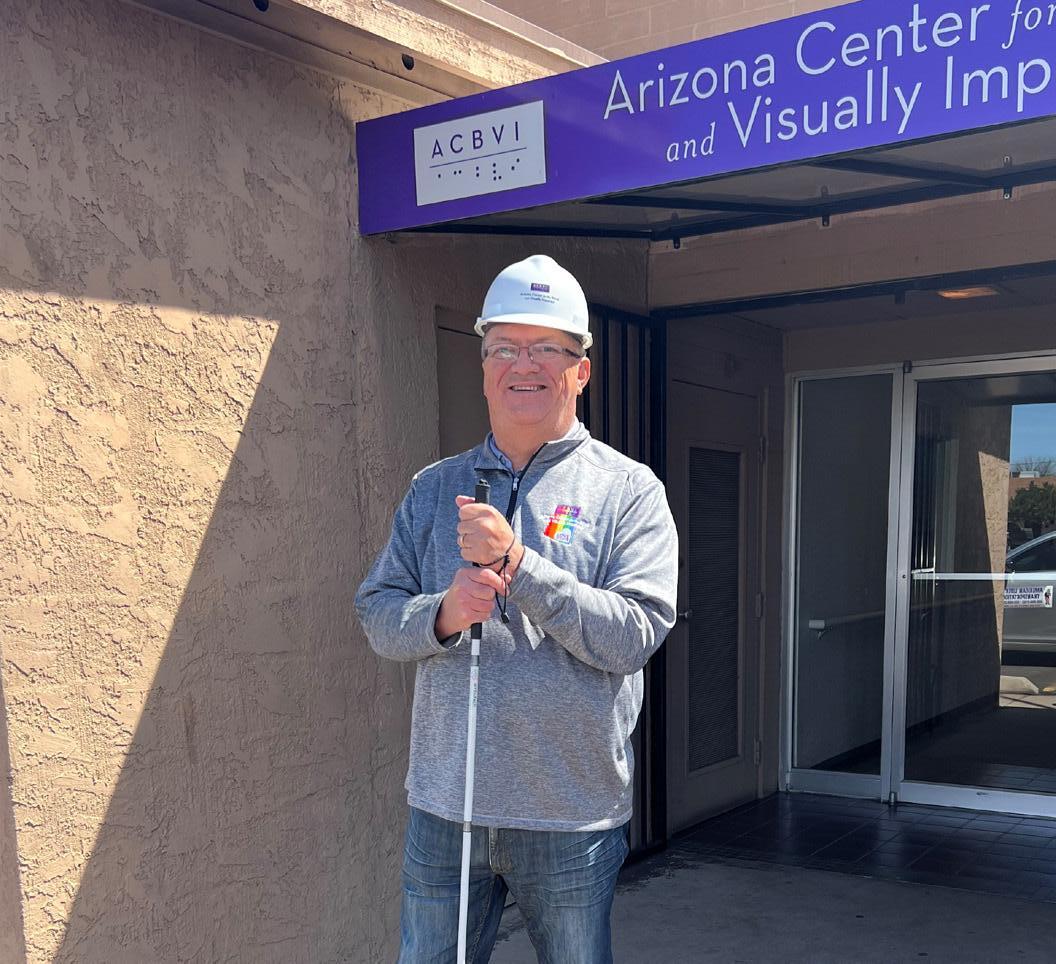
“I’m on the board, and chair of the development committee,” he said. “My passion is to help them grow. Two and one-half percent of the American population is impacted by blindness or vision loss. Using that equation, that equals nearly 200,000 in Arizona. Our current client maximum is only 300, but we hope that changes soon.”
ACBVI has been empowering people with vision loss since 1947.
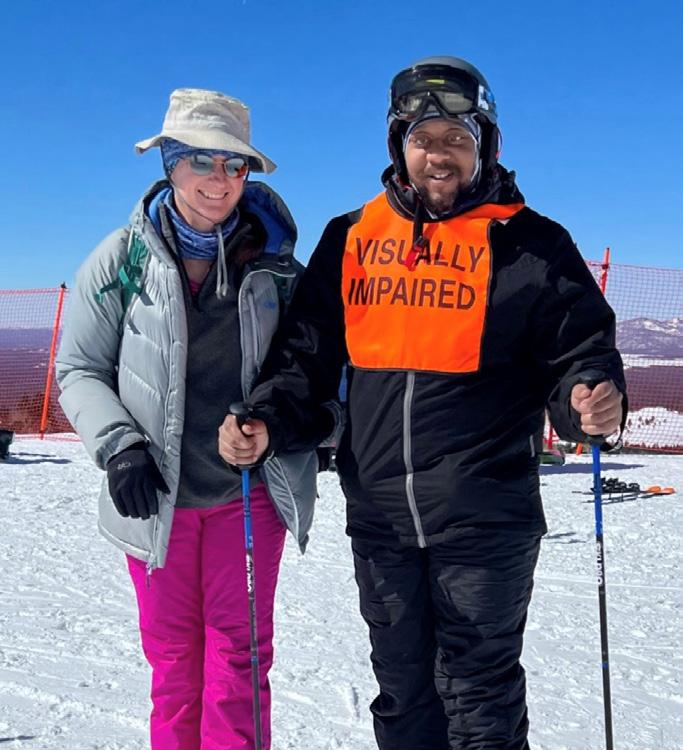



ACBVI has just purchased the block on which their center sits. They’ve partnered with Terros Health to increase and expand their services, the list of which is long: social and recreation programs, vocational training, support groups and more. They’re currently training clients who are computer-savvy to provide support to sighted computer users. And they’ve begun an adventures program, allowing clients to enjoy skiing, indoor rock climbing and water sports.
“I hope readers will stop in for a site visit,” Rudolph said, “no pun intended.” He encourages everyone he meets not to waste a single minute. Live fully, find a second act and give back to the greater good. Because life can change in the blink of an eye.
To learn more, visit acbvi.org
This is the story of a farm girl from Indiana who met a Brooklyn boy who traveled the road from cab driver to CEO.
Rebecca Ailes-Fine and Peter Fine met during their senior year at Ohio University in Athens, Ohio. “It was pretty instant for me, but it took him longer,” Rebecca said of their early attraction.
After graduation, Rebecca moved to New York for a job, while Peter went to Aspen to learn how to ski.
“He had a gap year before anybody knew about gap years,” Rebecca laughed. “He drove a taxicab in New York to help pay for college and for his gas to go be a ski bum.”
After his so-called “bum year,” Peter went to grad school at George Washington University in D.C. to launch his career in healthcare. “I liked the idea of being able to use management skills in a feel-good kind of business,” he said.

Following that, Peter and Rebecca got married and had three children, Drew, Jillian and Cameron. Over the years, they lived in New York City, then back to Indiana and on to Illinois and Wisconsin. They loved their life — Rebecca’s extended family pitched in, and the kids excelled in sports. “I loved the Midwest,” Peter said. “Especially the people.”
Still, when Peter was recruited to become the president & CEO of Banner Health — one of the largest nonprofit, secular healthcare organizations in the country — it was an opportunity he couldn’t refuse. So he packed up and headed to Arizona in November 2000. Rebecca and their youngest son followed in January 2001, right in the midst of Wisconsin basketball season.

Cameron — a high-school junior and three-sport letterman — didn’t say a word the entire drive. But Rebecca’s parents were in Arizona (having moved here for her father’s health), as well as her sister and younger brother. Eventually, things smoothed out and Cameron wound up getting recruited to play football at Yale.


With the kids effectively launched, Rebecca and Peter discussed their new roles. “We had a conversation when he came into this job,” Rebecca said. In the past, her community involvement centered around the kids’ schools and sports. Now, her philanthropic work would be more public. “I would go into organizations that had missions I could support, that I liked what they were doing, and just started getting involved in the Valley,” she said.
First came Chrysalis, which helps people impacted by domestic violence, and Fresh Start, which helps women going through a life transition. “Fresh Start, at that time, had a connection with Banner, because Banner had the land they built their resource center on,” Rebecca said.
Nonprofits appreciated that Rebecca was an active board member, eager to roll up her sleeves. She helped start WISP, or Women Inspiring Scientific Progress, which was affiliated with the Banner Alzheimer’s Institute. “My mother was being treated at Banner for Alzheimer’s,” she said. “She’s now passed, but their resource center was so helpful that we decided to start a women’s group to provide ways to navigate the system — what to expect, and how to react to things as they were happening.”
After some time, the organization became WISH, Women Inspiring Scientific Healthcare. “There is still an Alzheimer’s channel in it and a commitment to Alzheimer’s, but we realized there’s more to it. There’s women’s heart health, gynecological and OB. There are women looking after their children’s or grandchildren’s healthcare,” she said.
She and Peter also supported the Banner music therapy program after seeing the benefit of music in Alzheimer’s patients like Rebecca’s mother. “They only had one music therapist for all of Banner Hospice, and there was much more need,” she said. Music therapy helps patients cope with their disease, reduces stress and provides a supportive tool for families.
“You really saw the connection that music made,” Rebecca said. After her mother passed away, Rebecca and Peter — whose mother also had Alzheimer’s — funded a second music therapist personally, and then made a matching gift to endow the program so it wouldn’t struggle to find funds every year.

For his part, Peter dove into the community, as well. “I was asked to go on the board of TGen, the Translational Genomics Research Institute,” he said. “I was one of the early board members, and was on there for over a decade. Then the Heard Museum board. I’m on the Greater Phoenix Leadership board, too.”

You might say Rebecca is the right brain and Peter the left of this couple that calls themselves “complementary opposites.” She is gregarious and chatty. His is more taciturn. But together, the couple has mastered a set of his-and-her roles that have helped shape the community.
Take the Desert Botanical Garden. Rebecca got involved with the Garden shortly after moving here and joined the board in 2002. “I grew up on a farm but needed to figure out how to garden here, versus in the Midwest. Because when it says full sun, that does not mean Arizona sun,” she laughed. She is currently serving her third term on the board and has managed their big events several times.

But the connection with the Garden runs deeper than keeping desert marigolds alive. When Peter was fighting throat cancer and going through treatment at MD Anderson Cancer Center, the Fines rented an apartment nearby while he was undergoing radiation. “We would walk across the Garden, as long as he could. He found a sense of peace and the connection between health and wellness and gardening,” Rebecca said.
Indeed, the native New Yorker accustomed to traffic and horns used the Garden to clear his mind. “As a result, we came up with the idea of creating a garden where cancer patients can go and relax, contemplate, think,” Peter said. Located in the historic section of the Desert Botanical Garden, the Fine Family Contemplation Garden features a labyrinth, reflective water feature and a line from a poem written by their daughter, Jillian. “It turned into this big thing. It’s been on TV and was in a Disney movie,” Peter said.

Cancer inspired the couple’s work with another local nonprofit. Rebecca and Peter, together with Derek and Amy Hall, are co-chairing the Joy Bus More Than a Meal campaign. “It’s a huge campaign for a tiny organization,” Rebecca said. “They’ve never done one before.”
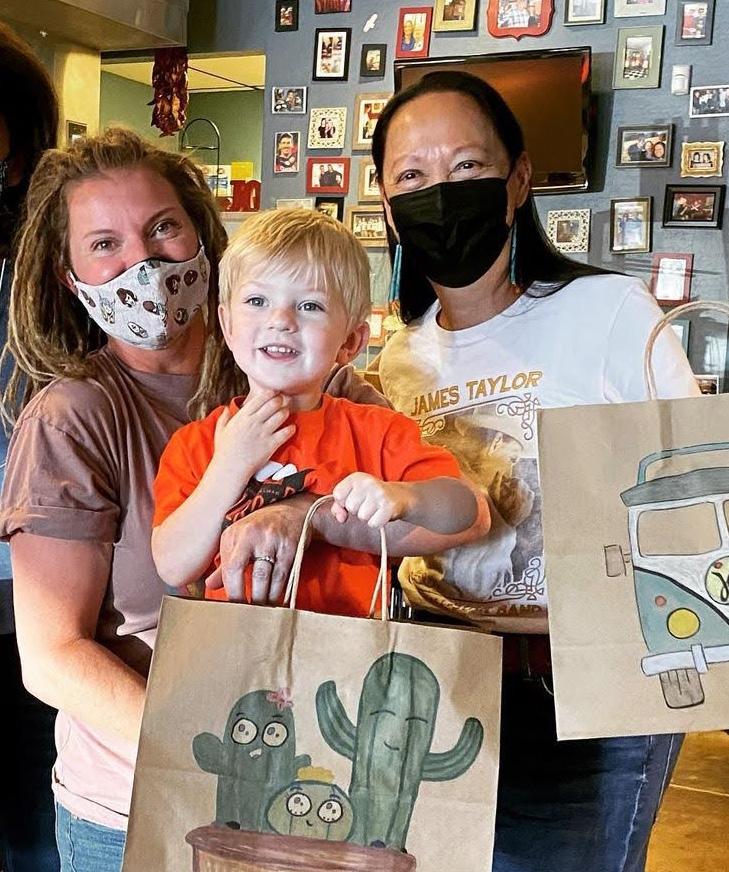

The Joy Bus eases the struggles of home-bound cancer patients by delivering fresh chef-inspired meals. They aim to raise $5.4 million to build a bigger kitchen and serve more patients, with the ultimate goal of 2,500 meals per week by 2026. “They didn’t know what they were getting into when we said we’re gonna make this happen,” Rebecca laughed.

Turns out, the Fines’ philanthropy doesn’t end with outside organizations. About five years ago, the couple started a donor-advised fund at the Arizona Community Foundation with the hope of fostering an interest in philanthropy in their kids and grandkids. Each year, they have a meeting near the holidays, when the family comes to visit. “Each individual has to submit an organization they want to make a donation to. We have to approve it, and ACF has to verify that it is a legit organization,” Peter said. Then each person — from parents to children to grandkids — has to present their organization for a share of the money.
But then there’s a twist. At the end of all the presentations, each person gets another pot of money that they can give to the organization whose presentation impressed them the most, but they can’t give it to their own organization. “So the presentations are important because there’s more money that can come from a good job,” Rebecca said.
Over the years, the chosen organizations have skewed toward the environment. “We do lots of fun family vacations with them, so there have been things like saving the sea turtles and protecting the coral reefs,” Rebecca said. The entire family took a trip to Africa last year, and donations went to the Mara Elephant Project, efforts to preserve clean drinking water, and Uhura compostable sanitary pads.
As co-chairs of the Joy Bus More Than a Meal campaign, the Fines aim to help the nonprofit dramatically expand its kitchen, pantry and dining capacity beyond what its current 1,400-squarefoot location provides so that it can serve healthy and delicious food to more people with cancer. To learn more and donate, go to thejoybusdiner.com.
The exercise has a few perks, in addition to inspiring a philanthropic interest in the younger generations. It’s teaching the grandchildren — Ryder, Carter, Skylar and Crosby — how to succinctly present an idea and capture an audience’s attention. It’s also ensuring a sense of togetherness into the future.
The fund goes out for three generations. After Rebecca and Peter pass away, their three children will become the advisers. After they are gone, the grandchildren will take over. After they pass, the money will flow back to ACF for their own programs. “It can be there for a long time. So for us, when we’re gone, it’s a way to force the family together once a year to do something,” Peter said.
Togetherness is big for the Fine family. When they aren’t traveling the world (Peter and Rebecca are looking forward to taking grandson Ryder on his high school graduation trip to Barcelona in July and granddaughters Carter and Skylar on a summer trip to Venice), they spend time reading (history for him, dystopian fiction and YA books for her).
A devoted sports fan — Peter played lacrosse in college and was a certified youth soccer coach when his sons played travel soccer — Peter enjoys talking sports with his boys. He recently took Cameron to London for an Arsenal game before his wedding in February.

Rebecca isn’t a sports nut, but has picked up an affinity over the years. “I would go to sports games with him; he would come to the ballet with me. I would go to more sports
games with him; he would come to the symphony with me. He’s a huge fan of theater now,” she said.
Indeed, the back and forth is key to their recipe for a winning marriage. “I respect her interests; she respects my interests. And then we engage around our shared interests,” Peter said.
It’s a formula that has worked for the 47-and-a-half years they’ve been married, and one that’s worked for our community as well. “We’re part of the fabric of this community. Clearly, I am with the company I run, and in these interests we have,” Peter said.
He’s unique among his peers in that he has spent 23 years at the helm of a major organization. “That in itself is unusual in this day and age. It’s been interesting for me, and intellectually stimulating,” Peter said.
And while it may be Rebecca serving on a board, she is representing their shared interests. The Desert Botanical Garden, Arizona Science Center, the Joy Bus, Florence Crittenton and many more organizations — the couple puts their effort into things they are passionate about.
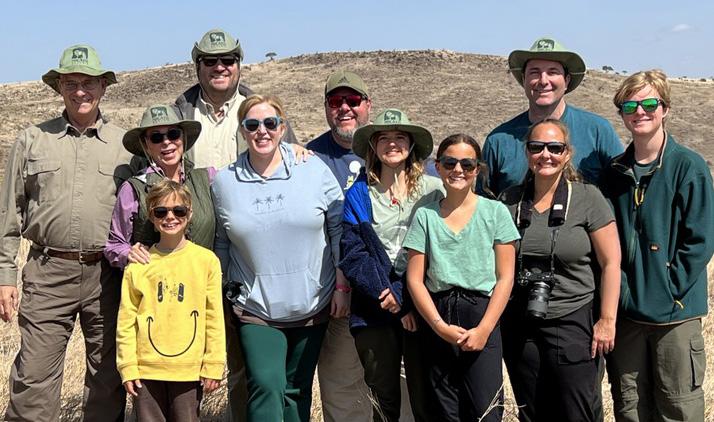
“We are true partners, in all aspects of the word. Otherwise, we wouldn’t have lasted the last 47 years,” Peter said.











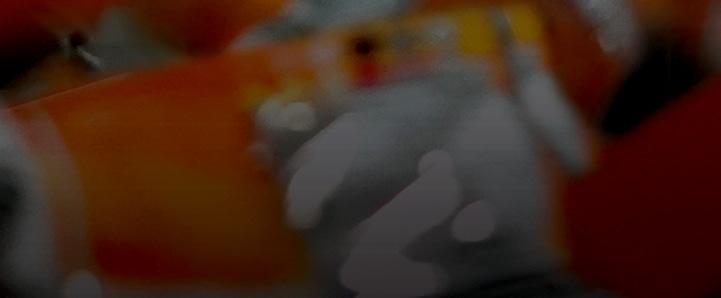


 BY TOM EVANS
BY TOM EVANS
I’ve always felt that the characterization of generations and their qualities was a bit overhyped. Yes, a 50-year-old looks at the world differently than a 25-year-old, and yes, that 25-year-old is into different things than a 75-year-old.
But some core values transcend generations, even if they’re reflected in different ways. Philanthropy is a great example. It’s not that older people want to be philanthropic and younger people don’t — they just approach philanthropy differently.
So we decided to chat with some of the more successful and established groups that promote philanthropy for young professionals and see how they’re preparing the next
generation of philanthropists for the future.
Bottom line — it’s not always about the money. It’s about rolling up their sleeves and experiencing the benefits of giving back first-hand, while forming relationships that carry well into the future.
“I would say what we’re seeing in the next generation is this focus on actual time given back to charities,” said Dan Fischer, vice president of marketing for The Saguaros. “Yes, we are a fundraising organization, and yes, our goal is to always break records, but we are seeing that the actual time impact is becoming more and more important for members and less emphasis on the fundraising.”
The 2022-23 Junior League of Phoenix board of directorsThe Saguaros, formerly the Scottsdale Active 2030 Club, is a men’s nonprofit that supports Saguaro’s Children’s Charities, which has donated millions of dollars to local nonprofits serving children. Now in its 35th year, The Saguaros pride themselves on “hosting larger-than-life fundraising events that combine five-star service and toptier fun while raising funds to help local children in need.”
The group consists of 50 active professionals at any given time, many of whom are getting involved in the community for the first time.
“They have seen in their careers and made it far enough up the corporate ladder, and they’re saying, ‘I need to do something more that helps the community grow. I can’t just live, work and be social,’” Fischer said. “It’s, ‘Let’s be more impactful,’ and how can they help, whether it’s financially or with their time and volunteering. That’s really where we’re seeing — a lot more people wanting to leave a longer legacy for themselves.”

Junior League of Phoenix is a women’s leadership development organization focused on community impact with more than 800 members and a 90-year history in the Valley — and an evolving focus on empowering women and girls — but their leadership says the most recent class of applicants was heavily comprised of women in their 20s and 30s.

“It’s interesting, because we’re definitely seeing the younger generation right now,” said Ashley Bunch, board executive vice president of Junior League of Phoenix. “I would say we’re seeing a lot of college graduates and up to probably their mid-30s in the majority of our provisional class this year.”
Incoming Junior League members are focused on getting their hands dirty, literally in some cases — particularly at the organization’s popular Rummage Sale event, which is a required volunteer experience for all members.


“I think the pandemic really made people think about what’s important to them,” Bunch said. “We are an organization where we’re actually doing the work and we’re actually in the community. I think that’s very appealing in that you get to see the work that you’re doing and you get to work with people to see a project move from one phase to another. So it’s very tactile; you’re a part of it, and you actually get to see it and feel like you’re making a difference.”
That sentiment was echoed by Ashley Ford, past president of Valley of the Sun Active 20-30 Club and current president of its fundraising arm, Valley Kids Foundation. The group consists of 75 women ages 21 to 39 whose events

raise funds for about 10-15 nonprofits assisting children Valleywide. Over the past three decades, the organization has raised more than $2.45 million for local nonprofits.
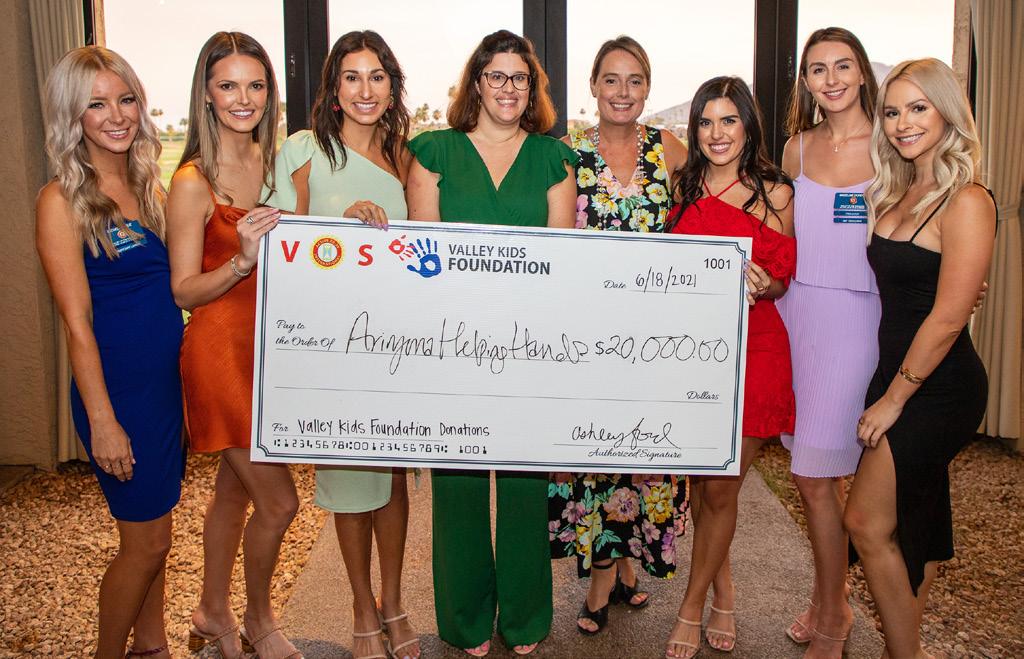
“Every year, we host mixers for interested women to attend interviews to join the club. The last few years, we have continued to have larger turnouts than the last,” Ford said. “Young professionals are often intimidated by ‘how’ to make a difference. Many want to give back to their communities but don’t know where to start, where they will see their efforts make an impact or are intimidated by volunteer requirements and commitments.”
Ford said the opportunity to do impactful work is a big draw to the organization’s members.
“Young professionals want to do hands-on work to see the impact they are making,” she said. “Raising money is great, but actually getting to work in-person with the nonprofit you are supporting makes such a larger and lasting impact.”
These young professional groups often lead to future philanthropic involvement. For example, Fischer said that many members of The Saguaros go on to join organizations such as the Scottsdale Charros or The Thunderbirds. Bunch said that many Junior League of Phoenix members go on
to serve with organizations such as the Board of Visitors or Valley of the Sun United Way.

Ford said this next generation will continue to focus on the social aspects of community involvement as well.
“I believe this next generation of philanthropist will continue to value the social and fun aspects of giving back while seeking out ways to get involved to meet new friends and connections,” she said.
To learn more, go to saguaros.com, jlp.org and vos2030.com
 BY JULIE COLEMAN
BY JULIE COLEMAN
I have made an effort to start my day more slowly. At this stage of my life, I’m trying to be intentional, so I don’t jump out of bed and zoom around the house. I wake up slowly and greet the day. My blinds are up so I can see the flowers outside as I wake, and the sun comes in the window with a natural greeting of the morning. Once I get ready, I move to my living room, where I spend 20 to 30 minutes in my chair reflecting, meditating and pondering. I watch the little critters in the backyard — the hummingbirds, lizards crawling around, bees buzzing and the flowers and bushes flowing back and forth in the wind while the wind chime sings to me. I slide very slowly into the day as peacefully as I can. Doing so helps with balance, because once I get into work, that piece is harder to maintain.
The YWCA has two important components of its mission — eliminating racism and empowering women. Both intersect and influence how we see situations in our community. I’m always bringing the lens of race and gender to bear in everything I do and with the people I talk to, whether it’s a conversation with a donor, community partner or an audience. Our work is multilayered. We provide direct services but are doing more work in the advocacy and systems change spaces because there’s usually a system that’s broken, causing a barrier for women, people of color, older adults, those with different abilities or LGBTQ. This barrier keeps people from thriving. Then, direct service programs are needed, such as food or access to education. We’re trying to change the systems and adjust and disrupt those barriers, so we get to a more equitable space with greater justice.
Our Systems Change Initiative, in partnership with Maricopa County, works with 10 West Valley communities to determine the barriers to accessing healthcare, particularly mental health, for adults ages 60 and older as well as LGBTQ youth ages 18 to 24. We’re holding listening sessions to get to the ground truth with the impacted individuals and the people who care for them because they can see the barriers.
We’re also talking to providers to help them see how doing business the same as always creates a barrier. It’s been eye-opening because these institutions don’t want to see they’re part of the challenge. They’re doing their best to
deliver services, but there could be something they could do just a little differently that will create better access and connection with the populations they’re trying to serve. Change happens in tiny increments because the systems are well-established.
Our Prosperity Programs offer workshops to help people with budgeting and saving. There is a long history of financial institutions and lenders keeping certain people from accessing capital and creating wealth. We’re going to expand and lean into the concept of prosperity and that it’s not just about money, but abundance and joy. We will look at the systems to see what the YWCA can do so more individuals can bank instead of using payday or title loans that take more of their money. We want to work with banks and lending institutions in thinking about a new market of customers.
Owning one’s identities and their intersections is an important part of being able to do your own social and racial justice work. When I present at speaking gigs, I try to offer a wider frame for people to see themselves in. I identify as Latina, lesbian and a boomer with certain lived experience. Not everyone has my background or identities, but they bring their own, so I talk about things in a way that allows them to go down that path for themselves.

I’m an educated Latina, have a good job and own a home. And that’s privilege. I can choose to use my privilege for myself, or use it to benefit community. I am making sure I use my privilege for the betterment of community,
particularly women and people of color, because I identify as such, and that’s our mission. This role is a perfect fit for me because I love the work, its purpose and meaning. It gets me excited, and I wish I had had this job 20 years ago!
My head is always thinking about what else I need to raise up and shine the light on. To help turn it off, I take ballroom dance lessons twice a week and compete in ballroom dancing. I dance with a woman and start out as the lead, and then we switch leads as part of our choreography. This also plays out in how I lead the YWCA and is an analogy for how cooperative leadership can happen in an organization when I let go of the lead, someone else takes the lead, and then I move in to follow.

I also consider myself a philanthropist. I serve on the boards of the YWCA USA and the North American SameSex Partner Dance Association and am actively involved in the Latina Giving Circle, a group of Latinas who pool their resources for the benefit of local nonprofits serving Latinx communities, as well as the Kellenberger + Tollefson Center for LGBTQ Philanthropy at the Arizona Community Foundation. I lead my life and this organization with the concept of abundance; that there’s enough to give freely. This is how we build our partnerships, and it all comes back tenfold.
To learn more, go to ywcaaz.org
Our mission is early childhood. Join us.
By focusing on the first five years, we are making a difference in the lives of young children, their families and our communities. Get involved to support Arizona’s young children.
First Things First is Arizona’s early childhood agency, with free programs, information and resources to support great childhoods.

AZChildhoods.com


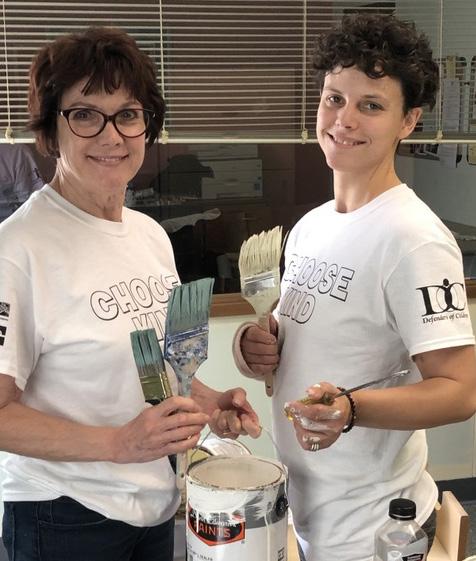
LEADERSHIP
Founder: Donnalee Sarda
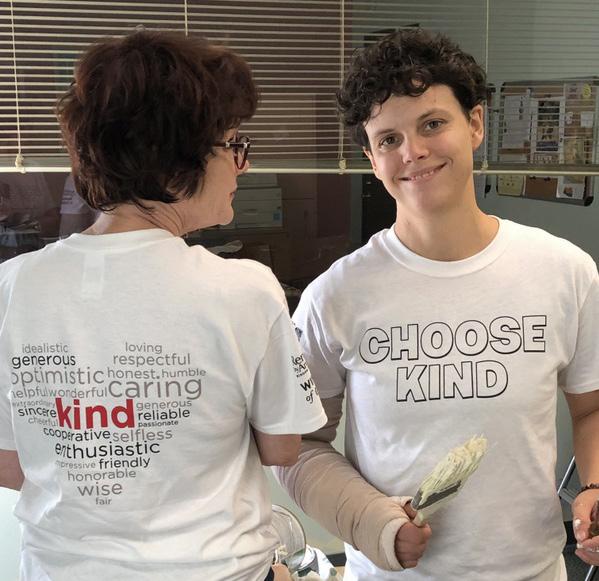
CEO: Johanna Fierstein, MSW
ANNUAL BUDGET
$750,000
Defenders of Children was founded in 2007 by Donnalee Sarda as an Arizona offshoot of the national organization, Justice for Children. Defenders of Children was borne of a desire to do better for child abuse victims in our community. It is a grassroots effort to explore systemic inadequacies and fill gaps in helping families protect children. Located in Central Phoenix, Defenders of Children is a fierce, interdisciplinary team of domestic violence and child abuse experts from the legal, clinical mental health and survivor services-focused social work professions, collaborating under one roof to provide comprehensive services to families.
CEO Johanna Fierstein came to the organization after a decade working in private law firms as a paralegal for attorneys focused on family and juvenile law. She had witnessed many failings within the systems designed to protect children, including children and abuse survivors being revictimized through unjust custody orders and antiquated ideas about domestic violence. After years of volunteering with domestic violence and sexual assault victims, Fierstein wanted to help bridge gaps at the intersections of family law, clinical mental health, victims’ rights and child welfare. She worked under the agency’s founder, Donnalee Sarda, who was and is a true warrior for abused and neglected children.
Defenders of Children’s mission is to protect children and families from violence, fight for their access to justice, facilitate healing and end the intergenerational cycle of abuse. With a focus on helping survivors of child abuse, domestic, interpersonal (dating) and sexual violence, as well as human trafficking, Defenders of Children works with low-income clients and their families, community partner organizations, domestic violence shelters, schools and city/county victim advocacy offices to promote its vision of healthier, violence-free families. The agency is known for taking a holistic, full-service approach to creating change for clients; both empowering survivors (of all ages) through legal systems and helping them walk the path down their emotional healing journey with the assistance of their counseling department. Defenders of Children is the only nonprofit agency in Arizona providing both of these services, with litigating attorneys who argue the most complex cases next to survivors in courtrooms, and independently licensed trauma clinicians, under one roof and always free. (Clients are never charged one penny.) Defenders of Children is known for providing unparalleled trauma-informed litigation services and expert therapists that practice the most up-to-date techniques and modalities for treating the complexities of trauma after acute and/or long-term abuse and violence. The agency has a truly transformative impact on clients’ lives.
Defenders of Children provided $1.7 million in free legal services to children and families in 2022. Their legal department’s programs were essential in protecting children and training advocates across the state. Their clinical department provided weekly, life-altering psychoeducational classes for sex trafficking survivors.
In addition to their work with clients, Defenders of Children engages in extensive community outreach. For example, the agency holds an annual event at the Children’s Museum of Phoenix, which is free to all their clients and community partners’ clients, and any families currently in family violence shelters. In 2022, they hosted 400 parents and children for a day of fun, confidence-building, learning, free food trucks and tons of free raffle prizes. In addition, they hold an annual Family and Juvenile Law Conference to advocate for families by training lawyers, judges, mental health clinicians and child welfare advocates about how we can and should come together to do better for Arizona’s most vulnerable children.

The team at Defenders of Children has observed that many abusers misuse the court system to maintain control over their former or current partners. Abusers file frivolous lawsuits to keep their victims coming back to court to face them, as courts are often the only tool left for abusers seeking to maintain a hold over their victims’ lives. This process retraumatizes victims, draining them of their finances, forcing them to miss work and face a terrifying, overwhelming legal system. Litigation involving child custody cases (which are often appallingly contentious) is one of the most common ways domestic violence perpetrators prolong contact with victims. The team at Defenders of Children gets hundreds of calls per month from desperate parents and guardians asking for help. The agency’s biggest challenge, by far, is inadequate funding and the need for more lawyers to litigate these cases in courtrooms.
There is a dire need within the child abuse and family violence communities not just for legal services, but for attorney-based litigation services so survivors of child abuse and family violence get access to justice in family and civil courts. Defenders of Children is motivated to continue their work over the summer, when children are out of school and reports of child abuse tend to surge.
To learn more, visit defendersofchildren.org



2023 started with some impressive milestones for Shift Kitchen + Bar in Flagstaff, including the restaurant celebrating its seventh anniversary and executive chef Christian Lowe being named a James Beard Award semifinalist in the Emerging Chef category.

“It is a recognition both for Chef Christian and for Shift. We are so honored to have what we do recognized nationally. This has brought us great business, which allows us to do so many more things. We have endless possibilities now,” said Dara Wong, the restaurant’s owner and pastry chef, who moved from Colorado to Flagstaff in 2014.
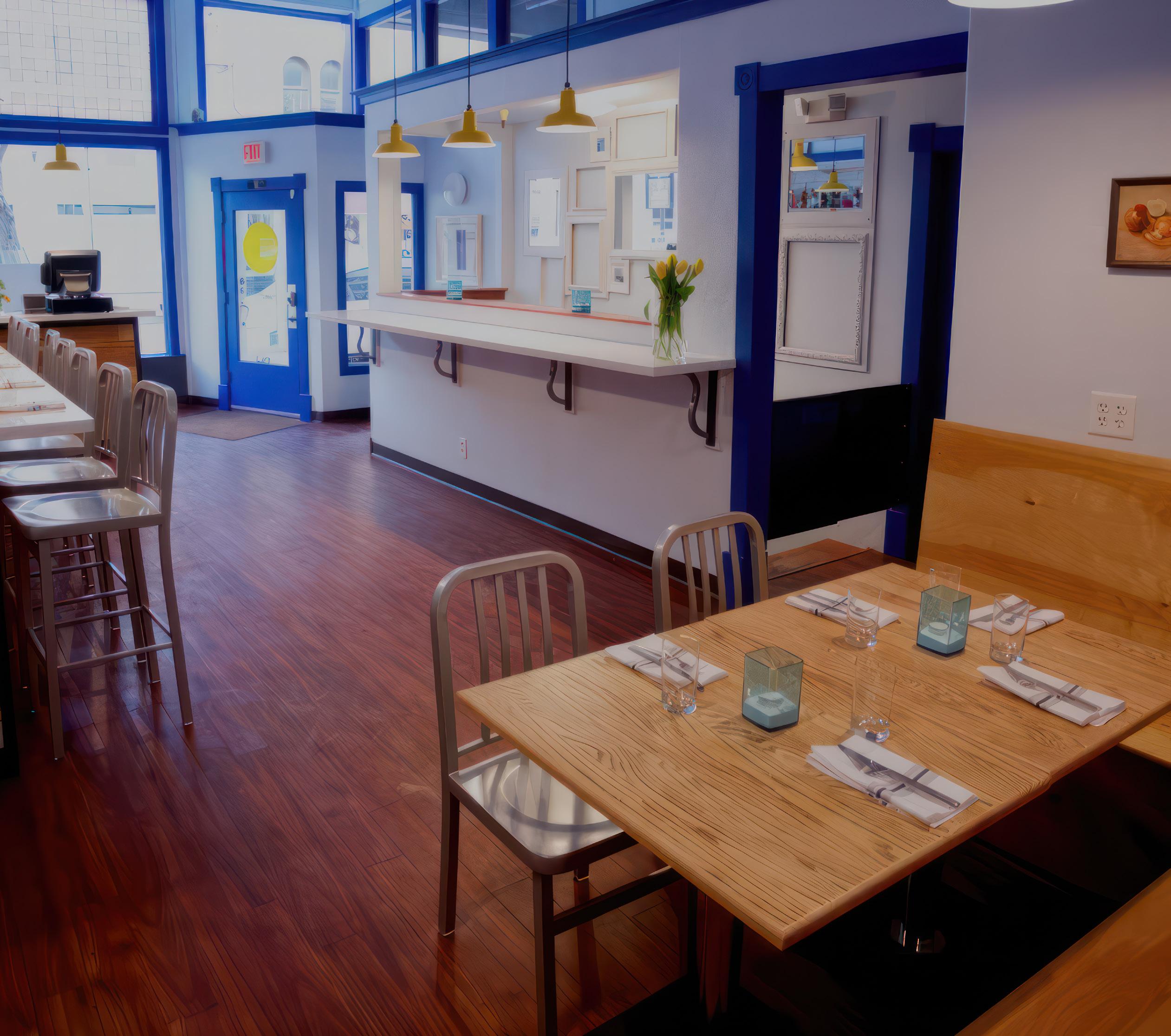
Shift offers a changing menu meant for sharing with a focus on seasonal and local ingredients. “We wanted a small bistro-type place where people could go multiple times a month and potentially get something different every time,” Wong said. “Guests at Shift can expect a rotating menu, creative approaches and a shifted mentality from the normal dining experience.”
Recent dishes on the menu include Moroccan lamb tartare, Thai curry tofu, braised short rib with garlic and chevre polenta, and jalapeño cheesecake. Shift also offers specialty cocktails, local beer and an extensive selection of wine and spirits.
Local suppliers are key to the menu at Shift. “We source as many local vendors as possible, whether that be in Phoenix or even the Four Corners. It’s really cool to be able to get tomatoes in December because of Phoenix’s growing season,” Wong said.
The chef’s counter is a prominent feature at Shift. “The kitchen is completely open and diners can talk with the chefs while they make their food. It creates a relationship for someone who loves to cook and wants to share that passion,” Wong said.
Wong opened
Oeno Wine Lounge in September 2021, close to Shift. “I want to have multiple businesses in the Flagstaff community. Wine is one of my passions, so a wine lounge was an obvious choice,” she said.

Over the past few years, Wong has seen the Flagstaff culinary scene expand. “It’s been great having Atria and other high-caliber restaurants open,” Wong said. “It helps our workforce and provides options for diners. I love growth; that’s what drew me to open Shift in Flagstaff in the first place.”
For more information, visit shiftflg.com.
Arizona native Matt Carter has been a leader in the local culinary scene for more than two decades as executive chef and partner in some of the Valley’s most popular eateries.

After high school, Carter spent a summer working at a breakfast restaurant in San Diego, which inspired him to go to Scottsdale
Culinary Institute. After graduating, he worked at a French bistro in Old Town Scottsdale and quickly knew he wanted to focus on French cuisine, so he moved to Paris for almost two years.
After living in France, Carter returned to Phoenix and worked for acclaimed chef Christopher Gross for over six years, working his way up from line cook to sous chef to chef de cuisine.

Gross changed Carter’s perspective and influenced his future. “Christopher was an amazing mentor who helped me see the big picture and fall in love with the business,” Carter said.
While employed by Gross, Carter gained an appreciation for a variety of cuisines while working at events with renowned chefs like Douglas Rodriguez and Roberto Donna. While cooking at a fundraiser with Gross, Carter met Thomas
Keller and got a job at the world-famous French Laundry in Napa Valley. After a year in California, Carter returned to Phoenix and worked at Michael’s at the Citadel, where he met his business partner. They opened Zinc Bistro at Kierland Commons in North Scottsdale in 2002.
After the success of Zinc Bistro, Carter was looking to open another concept. Inspired by Rodriguez, an idea for a taco shop evolved into The Mission in Old Town Scottsdale in 2007. In 2016, he opened Fat Ox, incorporating what he had learned from Donna about Italian cuisine and dining. Shortly after Fat Ox opened, Carter opened a second location of The Mission at Kierland Commons near Zinc Bistro. Carter’s restaurants employ more than 450 people.
“It’s fantastic how Arizona’s culinary scene has evolved, and a major factor is our ability to have a variety of ingredients delivered, like fresh seafood, as well as the growth of local suppliers for produce, meat and other items,” Carter said. “In the last 10 years, guests are becoming more educated and driving chefs and restaurants to be on the cutting
edge of food and beverage trends, which has made local restaurants even better.”

What’s next for Carter? “When I think about new restaurants, I think about what doesn’t exist locally,” Carter said. “I get ideas from other places as to what I can bring to Phoenix. That’s why I opened Zinc Bistro over 20 years ago, because there was nothing like it in North Scottsdale at the time,” he said. Carter has a lot of ideas, and the Arizona culinary community can’t wait to see what he opens next.

For more information, visit zincbistro.com, themissionaz.com and ilovefatox.com.
Dom Ruggiero opened Fire at Will on Shea and Tatum Boulevards in Scottsdale in November 2022. “We get a lot of feedback that people really needed something like this in this area. It’s awesome to be in my hometown and open cool spots in the community for people to enjoy,” said Ruggiero, who grew up nearby.
Fire at Will menu favorites include the award-winning Hush Burger from Ruggiero’s first restaurant, Hush Public House, Iberico ham croquettes, bacon-wrapped dates, and macaroni au gratin featuring aged gouda, manchego and gruyere.
Photos courtesy of Zinc BistroAs he did at Hush Public House, Ruggiero put a lot of thought into Fire at Will’s cocktail menu, working with local experts to design libations based on classic cocktails, like the popular Mr. Brownstone, made with brown butter-washed bourbon, black walnut and brown sugar.
Fire at Will is named after a military command. Shortly after graduating high school following 9/11, Ruggiero spent four years in the Marines.
“My first management experience was as a sergeant in the Marine Corps,” he said. “It taught me discipline, attention to detail and organizational skills that I’ve carried with me throughout my culinary career.”
After leaving the Marines and trying a few different jobs, Ruggiero attended Le Cordon Bleu College of Culinary Arts in Scottsdale. He worked for top restaurants and chefs, including Matt Carter at Zinc Bistro, Charleen Badman at FnB, and LGO Hospitality, where he worked at Chelsea’s Kitchen, Ingo’s and some of their California restaurants.
“I am super fortunate to have worked for some amazing chefs and learned the craft and technique,” Ruggiero said. “I learned about seasonality and produce at FnB, and I learned how to run a business at LGO. My experience has helped me become a well-rounded chef and learn not only how to operate the kitchen but the whole restaurant.”
In 2019, Ruggiero opened Hush Public House in North Scottsdale. “As an owner, I cook the food I


want to cook without any boundaries. When I opened Hush, I took a lot of the things I learned from the chefs I worked for and incorporated aspects of different regions with a seasonal chef-driven approach,” he said.
Hush has received local and national recognition for its thoughtful and delicious dishes. In 2021, Ruggiero opened the Vanilla Gorilla Tap Room & Bottle Shop next door to Hush.
Like all of Ruggiero’s restaurants, Fire at Will highlights local purveyors, including Sonoran Pasta, Crow’s Dairy, Noble Bread and Frites Street. “We use local suppliers as much as possible,” Ruggiero said. “I’ve worked with a lot of these suppliers throughout my career, and we support each other.”
After opening three restaurants in less than four years, what’s next for Ruggiero? As he and his wife Holly, who helps run the restaurants, are expecting their first child this summer, he has other ideas. “I have a lot of areas of interest to possibly pursue in the future,” he said. Stay tuned for more from this talented chef.
To learn more, go to eatfireatwill.com





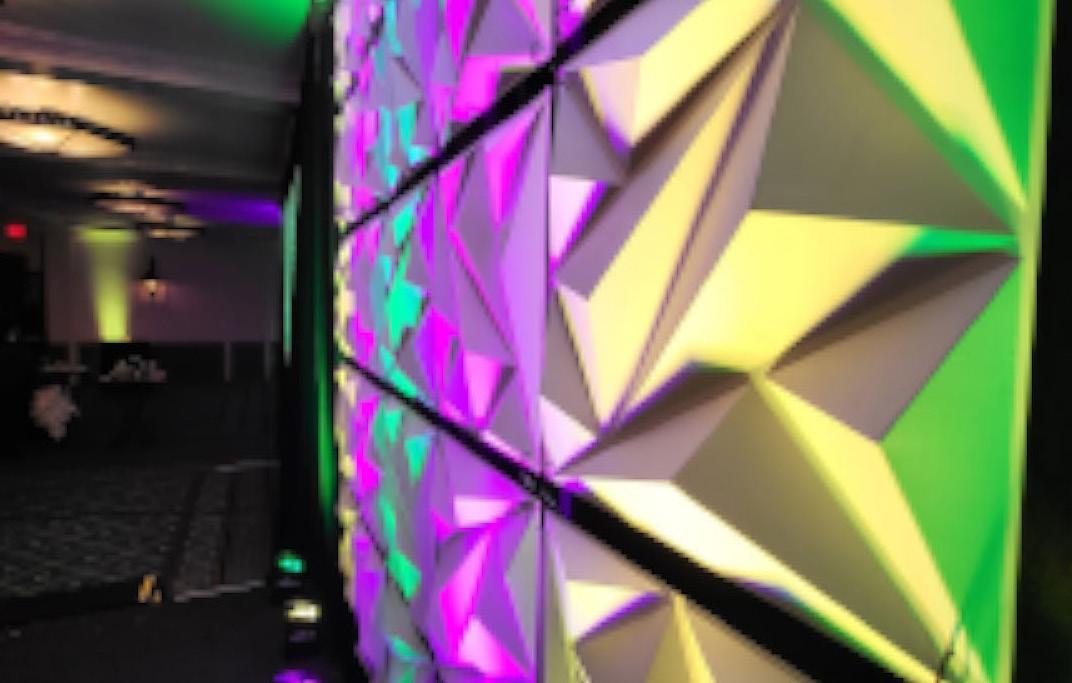

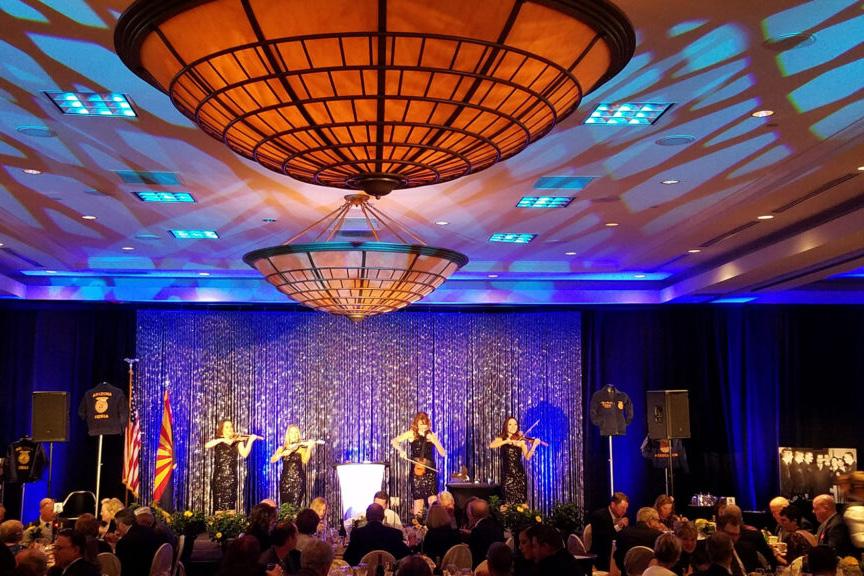











Ballet Folklorico Quetzalli-AZ celebrates the tradition of Mexican folkloric dance. Known for its upbeat music and colorful dresses that ripple like waves when dancers twirl and spin, folkloric dance has been practiced for centuries. Since its beginnings in 2008, Ballet Folklorico Quetzalli-AZ has transformed from a grassroots community-driven effort to a full-blown arts studio serving over 100 students from ages 5 to adult, where they are given the opportunity to perform dances from different regions of Mexico, while learning about the history and traditions with each lesson. For classes and performances, visit bfq-az.org










